Nîmes - 05 October 2019
Managed to find parking on the roadside at the outskirts of the historic city of Nîmes. 5 hours of walking later I think we’ve seen quite a bit, read on.
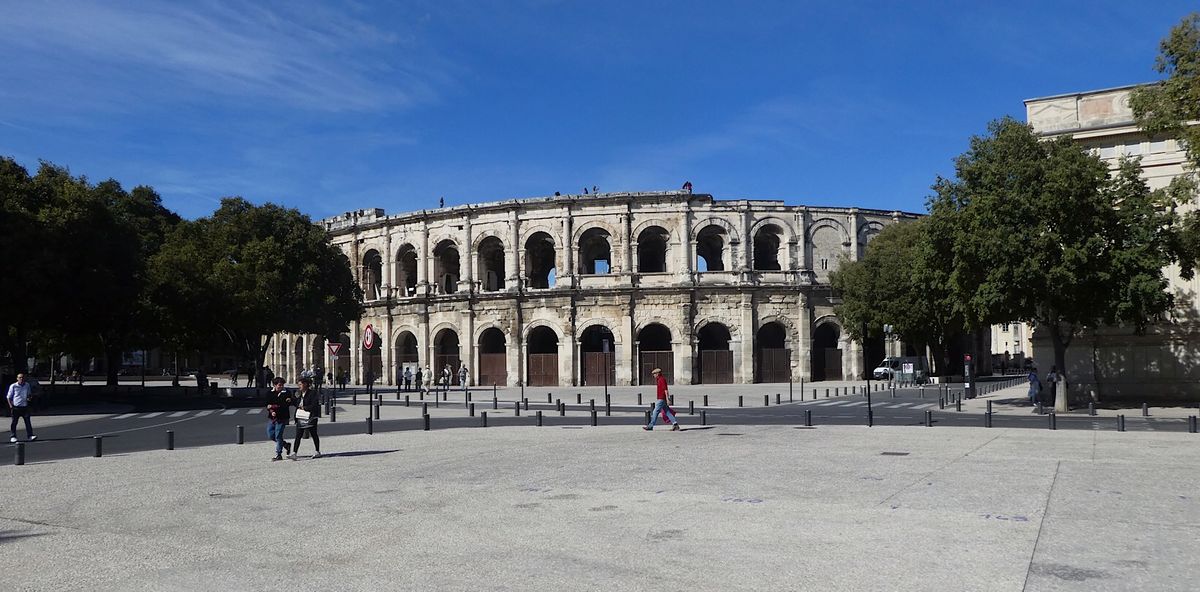
5 October
So, quite tired last evening, so quick cheese and onion omelette to fill us up. Lovely place to park, could watch different age groups put through their paces by the tennis coach. People were playing until gone 10pm! Despite it being a quiet place, and fairly dark, once again - didn’t sleep too well - unlike my husband!
Today has been a busy sightseeing day. Tintin driving. He drove for just over an hour, and we managed to top up with diesel, and LPG from a different place - and be parked up on the outskirts of Nîmes (Languedoc-Roussillon region, Gard département) - population 138,000 by about 11am.
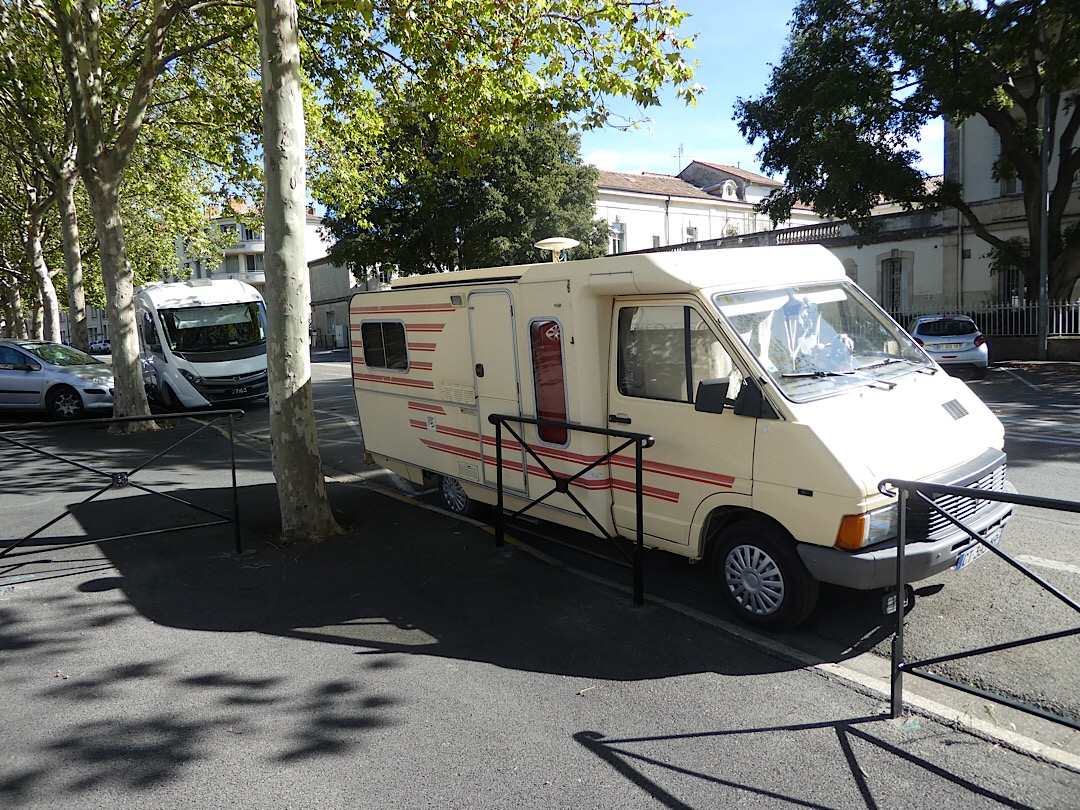
Made up some lunch to take with us, set off about 11.30 - and didn’t return until 5pm - and over 14,000 steps later!
It’s a science weekend - and wandered into a place because we heard music - lots of dressed up people, performing - what - we don’t know!
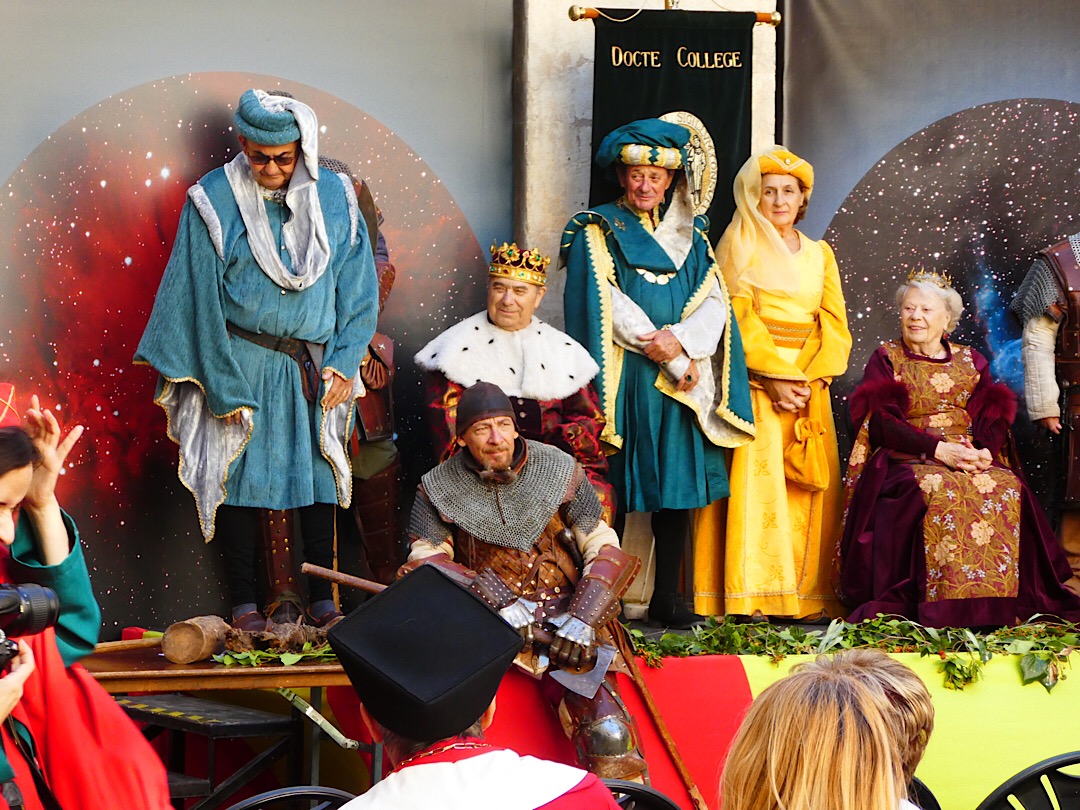
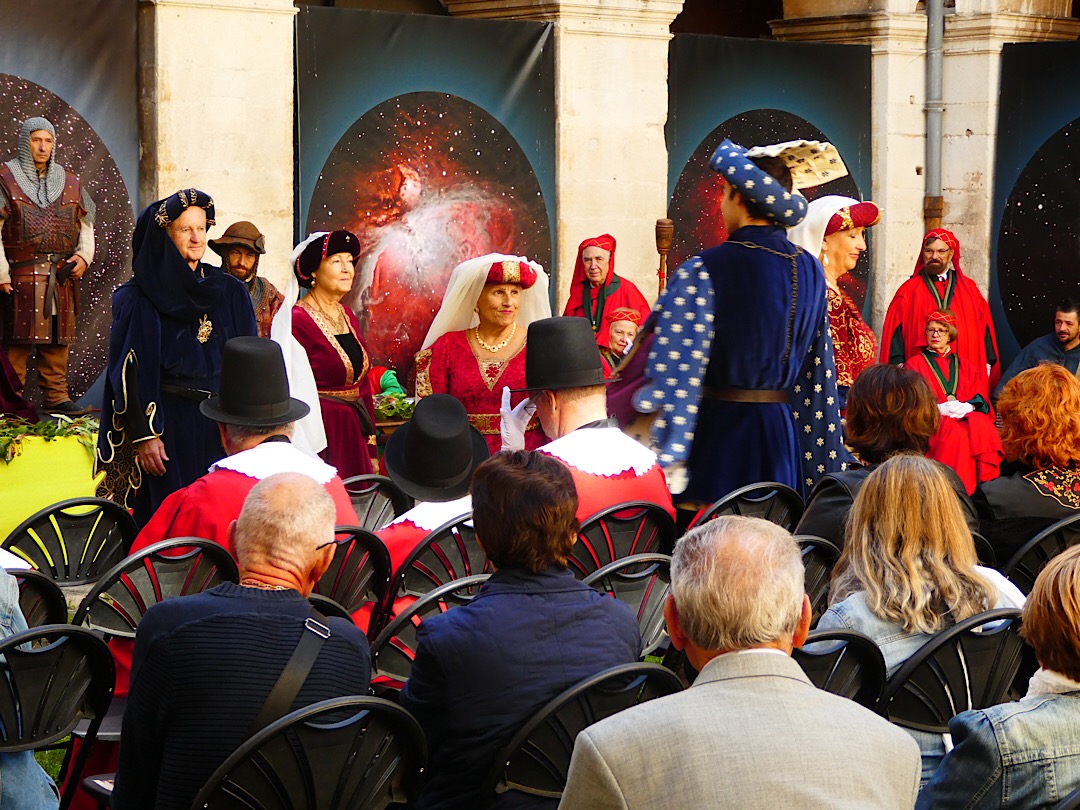
The Place of Justice is an impressive building.
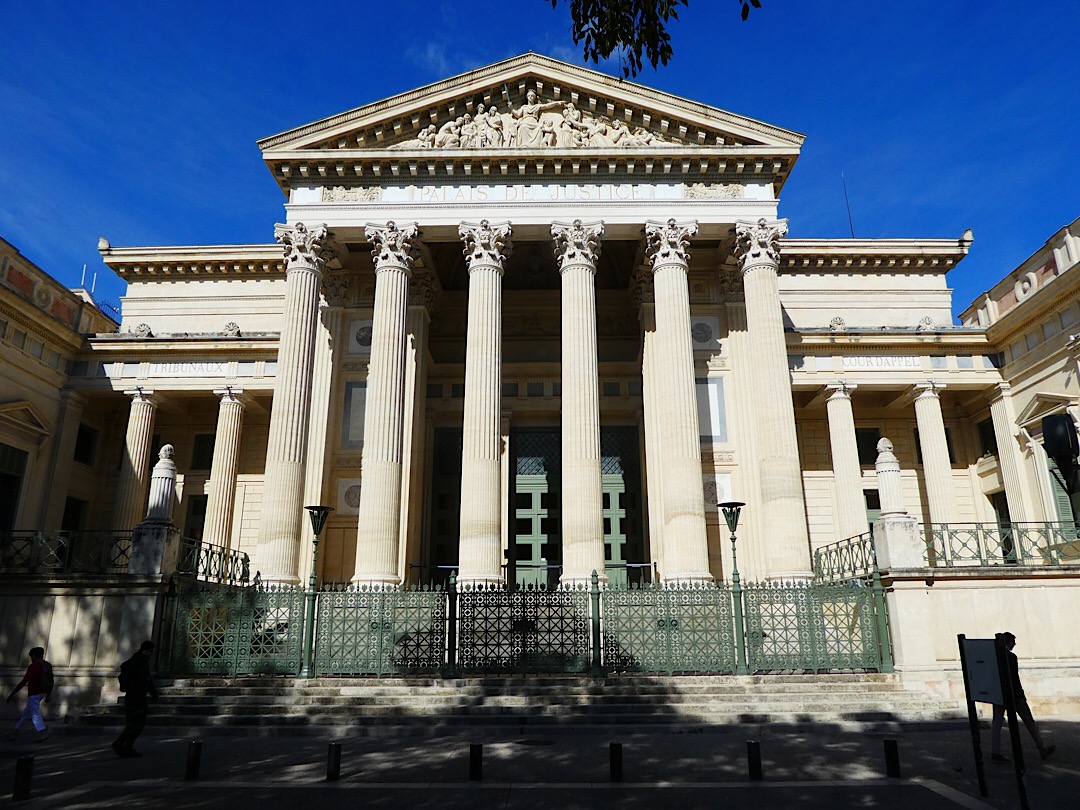
History bit to skip if you’re not interested!
The city’s bizarre coat of arms is a crocodile chained to a palm tree!
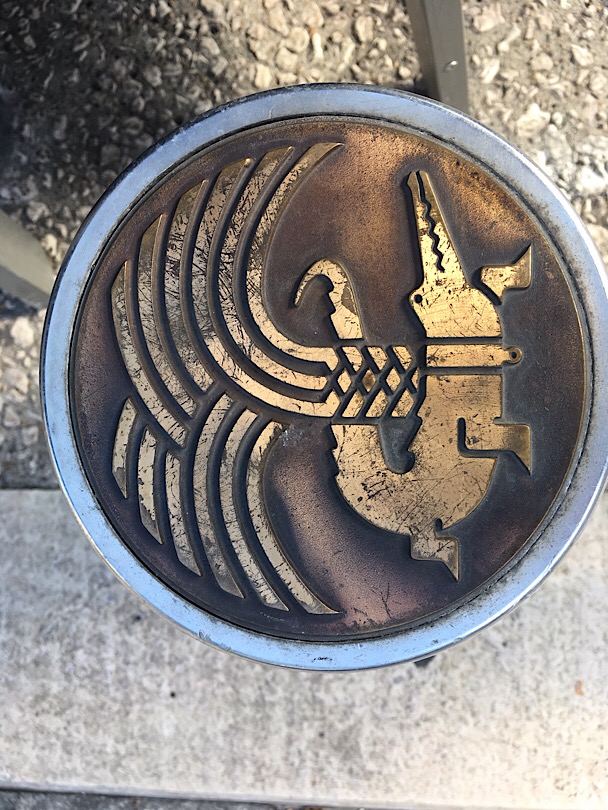
The founding of Nîmes goes back to the 6th century BC. The Volcae Arecomici, a Celtic tribe, settled here around a spring, made it a deity and built a sanctuary. In 120 BC, the Volcae, who had a vast territory, accepted the Roman legions without resistance.
The Gallo-Romans: Nîmes became a colony under Latin Law and was ornamented with sumptuous monuments. It reached its peak in the 2nd century AD. Successive invasions and then the arrival of the Visigoths in the 5th century put an end to its prosperity.
The Middle Ages: The return of peace made possible the building of new ramparts and the start of a period of prosperity. Trade started again, thanks to vineyards, olives and sheep farming.
From the Renaissance to the Age of Enlightenment: The Wars of Religion were violent in the 16th century. Protestants were kept out of public life and turned to trading. Their cloth production was soon exported within Europe and to the Spanish Indies. The city is getting richer and richer.
19th century: Thirty years of rapid success placed Nîmes and its silk industry at the European level, but competition from Lyon was fierce. Textile capital was very quickly reinvested in vineyards and a new era of prosperity began. Many private mansions were built.
Today: The old districts are being renovated, and the city is spreading southward.
First we found the tourist information office and picked up a map. Today was a spending day. We decided to buy a combi ticket - €13 each for three tourist attractions - was cheaper than paying for the two we wanted to see - so worth it.
Firstly - the amphitheater. It’s considered as being the best-conserved of the Roman world. The Arena was built at the end of the 1st century AD, shortly after the Coloseum in Rome. It had the capacity for more than 20,000 spectators, who watched hunts and animal and gladiator fights. The amphitheater is now used for bullfights, congresses, concerts and sports events.
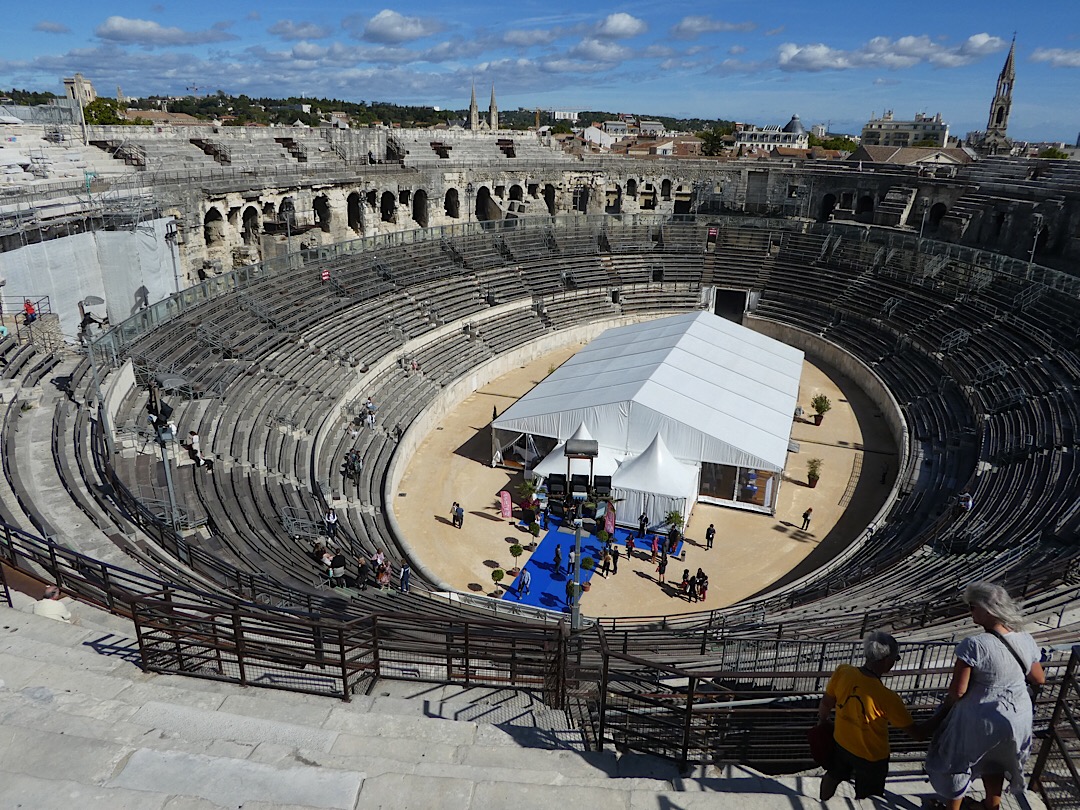
At 133 x 101m in area and 21m in height it is not the biggest, but the best preserved of the 70 Roman amphitheaters known to have survived. Its 124 exits (vomitories) meant that visitors could vacate in a matter of minutes.
I had to hand over my driving licence in order for us to have the audio guides. Never had to do that before!
If we’re honest, the guide almost gave too much information about what it would have been like. They had lion fights in the morning, then apparently come midday, that was when people due to die were killed - not very humanely. Most people would leave - there were even mobile food suppliers then, who were waiting outside! Main event was watching the trained gladiators fight. Maybe watching TV isn’t such a bad thing!
There was some kind of corporate event going on in the arena - so our pictures just have a big marquee in them!
Saw all the various weapons and techniques of gladiatorial combat. Also saw a few films about the bullfighters (Camargue ones, who go for the ribbon, not the kill!).
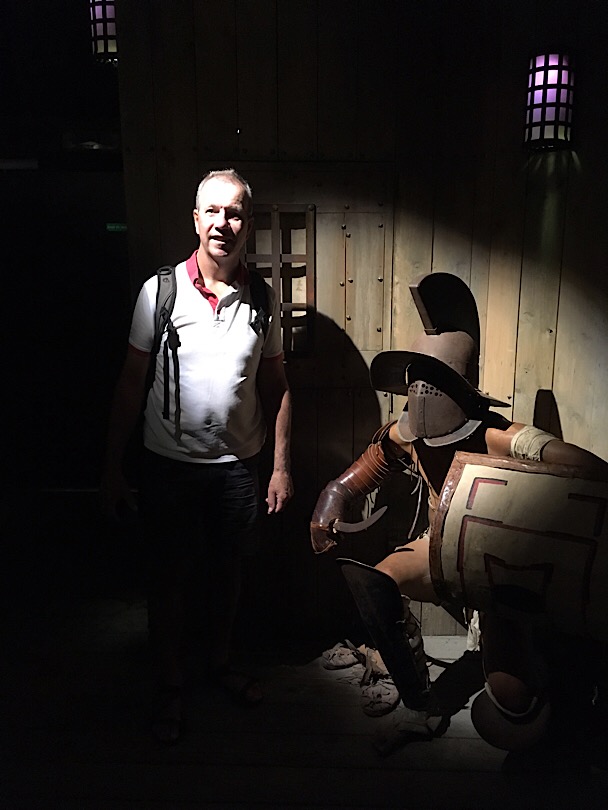
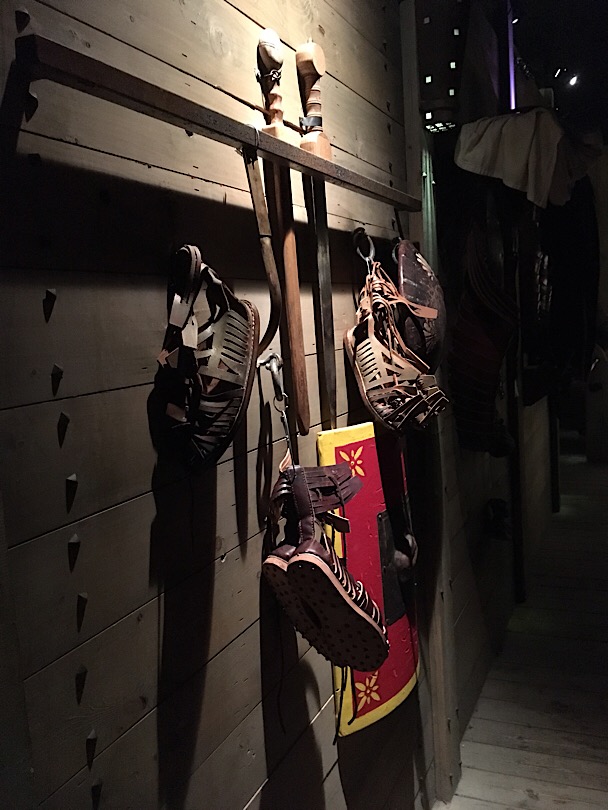
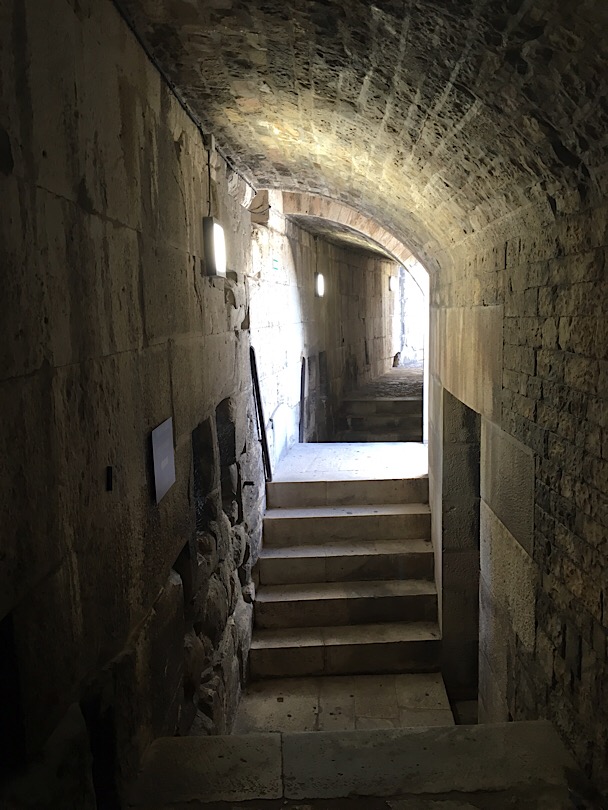
We both think we enjoyed our experience in Verona more - but maybe that was because it was all new to us?
Then walked to Maison Carrée - not to be mistaken with Maison Carré on Guernsey who sold lovely Swansea buns in my youth...
Built in the 1st century AD and dedicated to Caius and Lucius Caesar, the grandsons of the Emperor Augustus. It is one of the best-conserved temples of the Roman world.
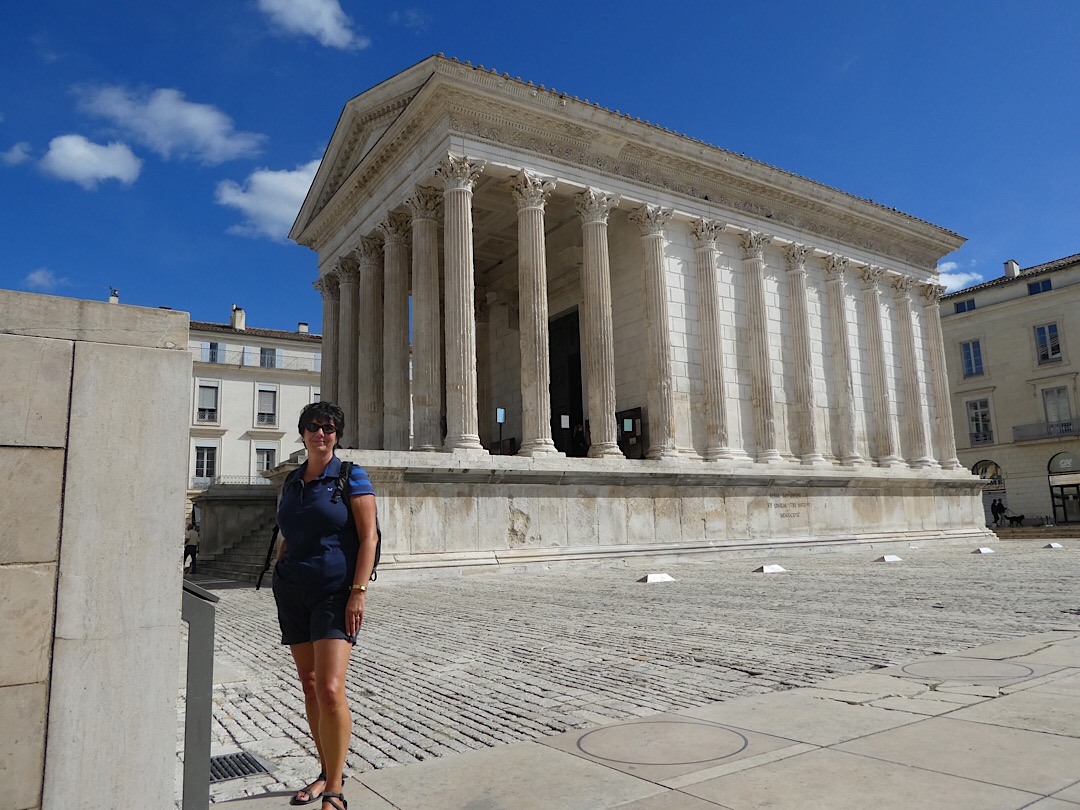
We had to queue to see the 20 minute film, The Birth of Nîmes. In summary, Julius Caesar’s loyal legionnaires were granted land here to settle after hard years on the Nile campaigns. Was it worth seeing it? Jury is out!
Then walked through some of the Jardins de la Fontaine. Bit random - a group of young girls practicing pole dancing with a photographer!
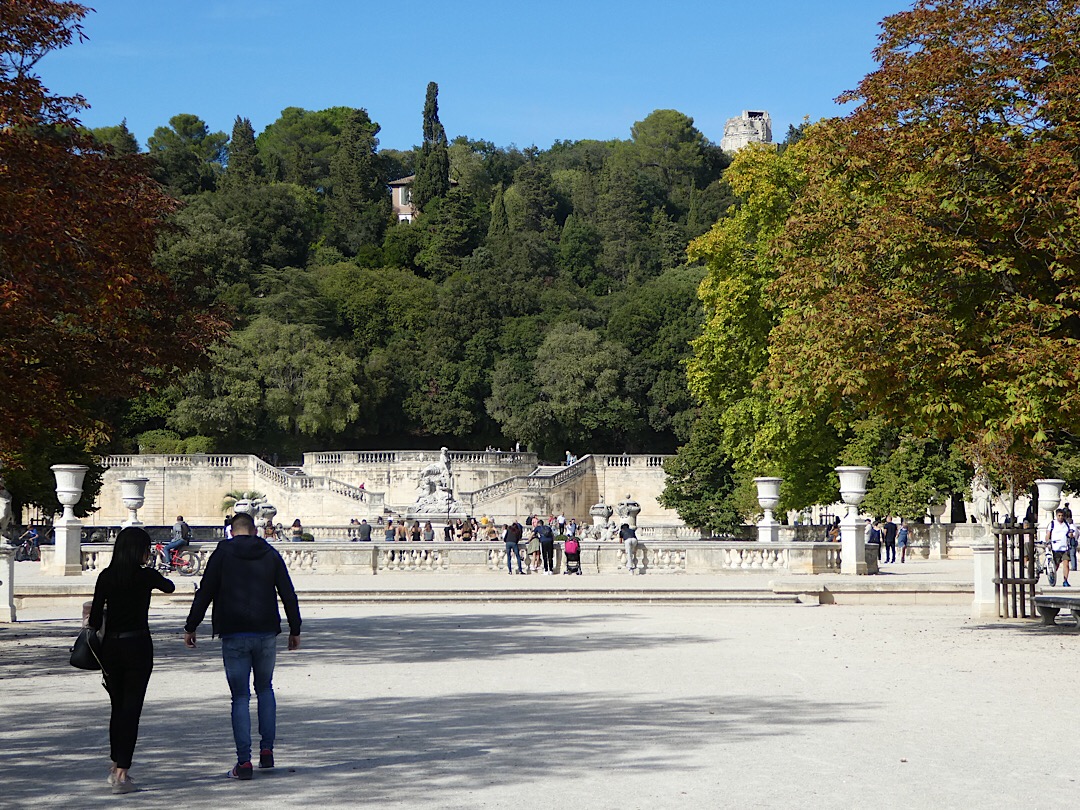
We were en route to the Tour Magne - Big Tower. Was built in 15 BC as a watchtower and display of imperial grunt, it is the only one that remains of several that once spanned the 7km long ramparts. It was 36m high, but now reduced to 32.5m.
We had to queue and wait to climb, as only 15 people were allowed at the top at once. Spectacular views - we’re definitely back in the flat lands!

On the way back, saw another Saturday bride - with all guests teetering in their high heels (women only!) in the park. There must be service after service on Saturdays, all you hear are car horns being blown, and lots of music.
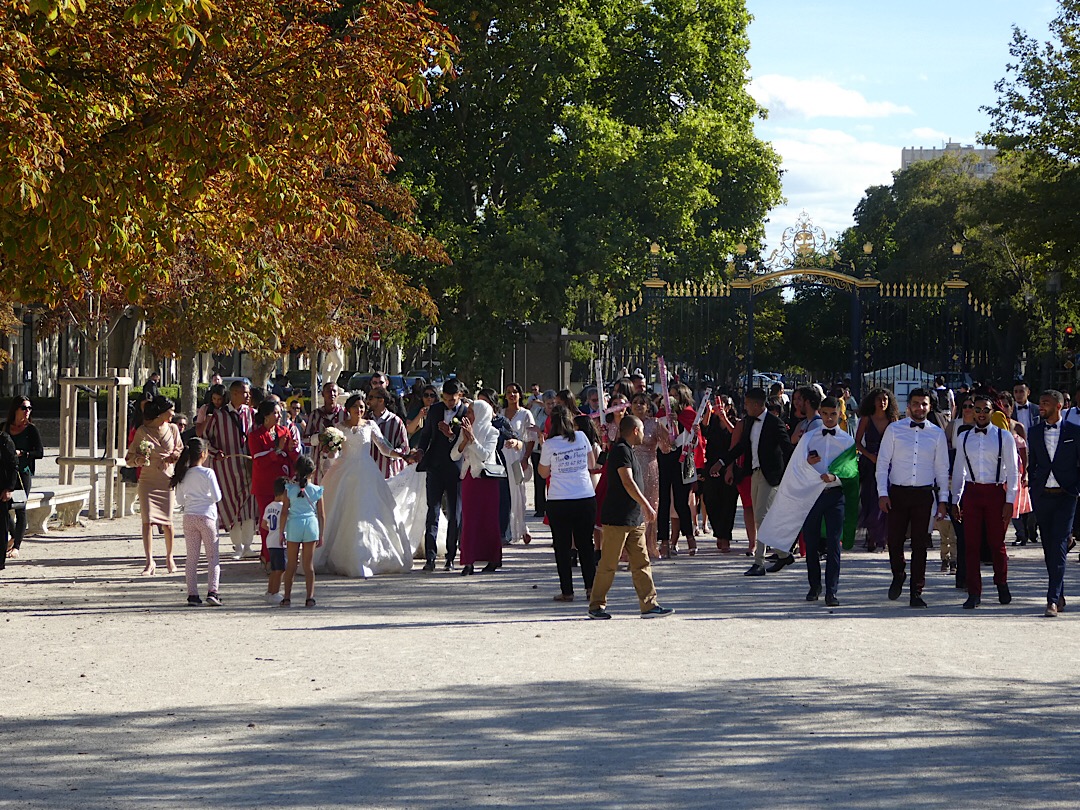
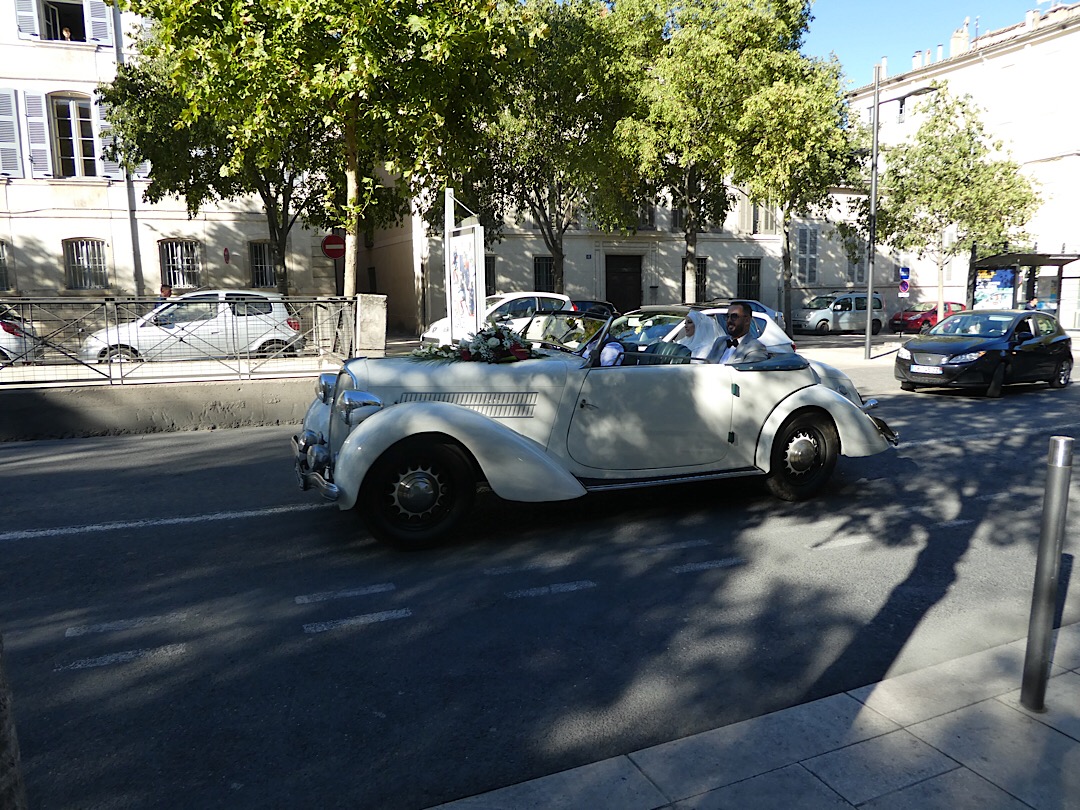
Saw the remains of the Porte d’Auguste, then had a quick look in the huge Notre-Dame et St-Castor on our walk back.
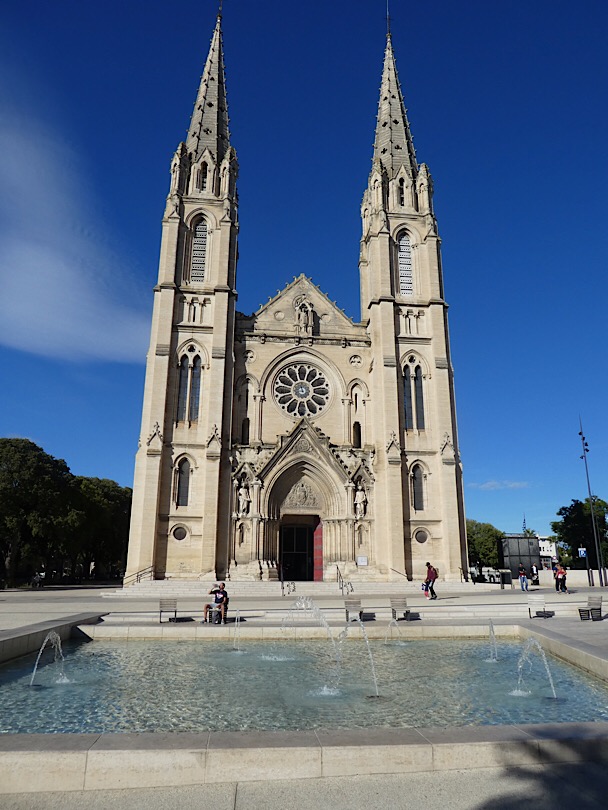
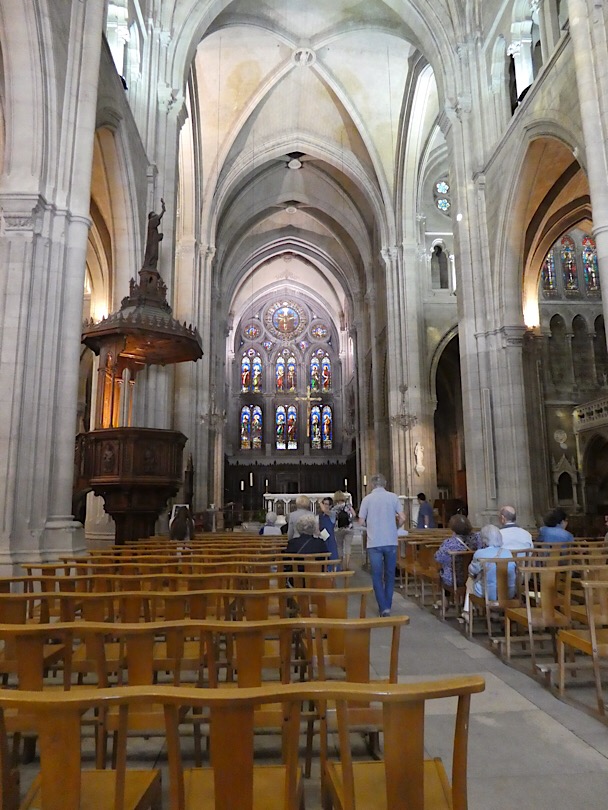
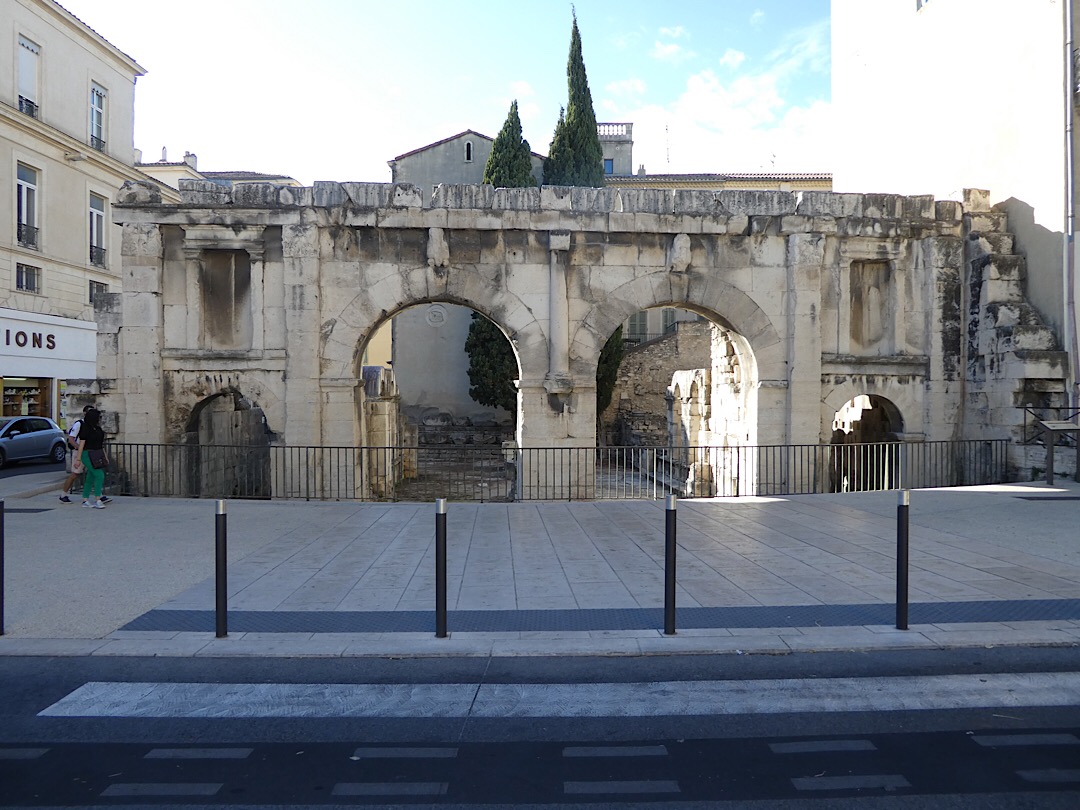
We were tired, and pleased to get back to Dave. Even happier that he seems intact - we left him parked on the side of a fairly wide road - but we’ve seen the way some of them drive!
Not a place to stay the night, so Tintin drove through some of the (at times confusing) outskirts of Nîmes for about 45 minutes. We’re now at Vestric-et-Candiac - a large carpark next to a children’s play area, with two other mohos.
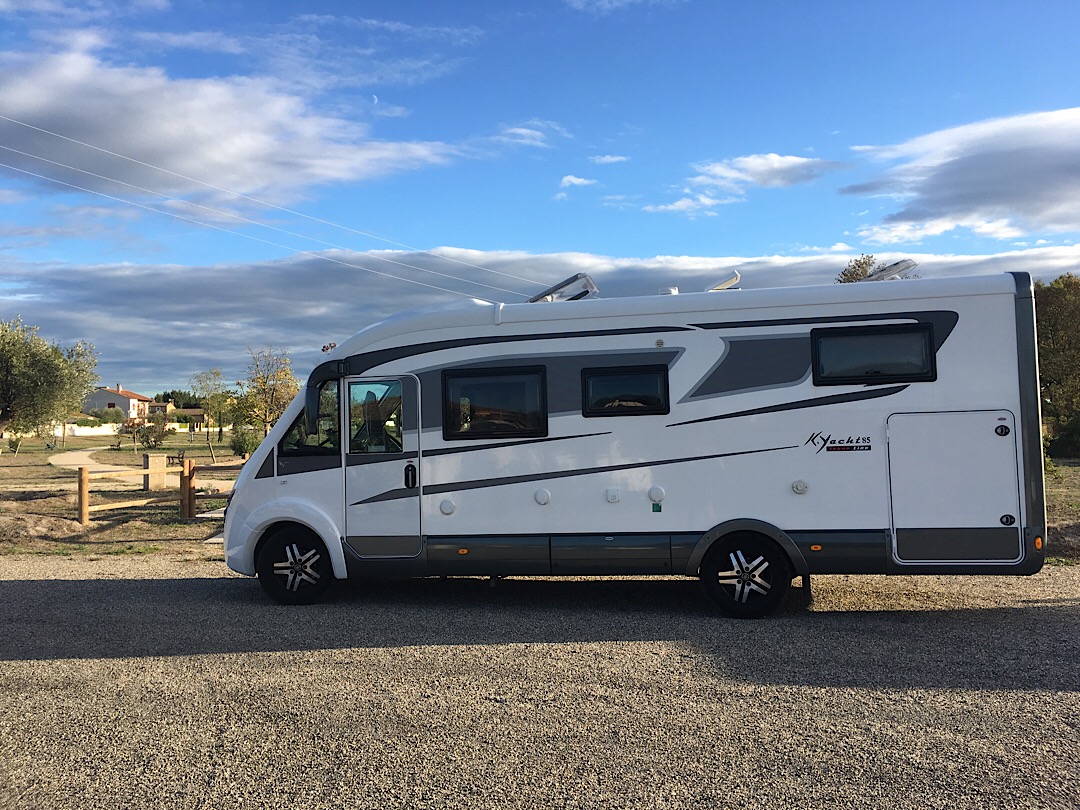
Well deserved rum and coke, followed by Quiche and a write of the blog!
It’s been really good weather today, warm and sunny, not too hot - and certainly not cold! Maybe we now need a few days of not sightseeing!
Random fact - the famous mineral water (brand owned by Nestlé) - Perrier is bottled in Vergèze, 8 miles from here.
Also, the blue serge de Nîmes (denim) has been famous the world over since Levi Strauss used it to make his blue jeans in the USA.
Lots of photos from today -
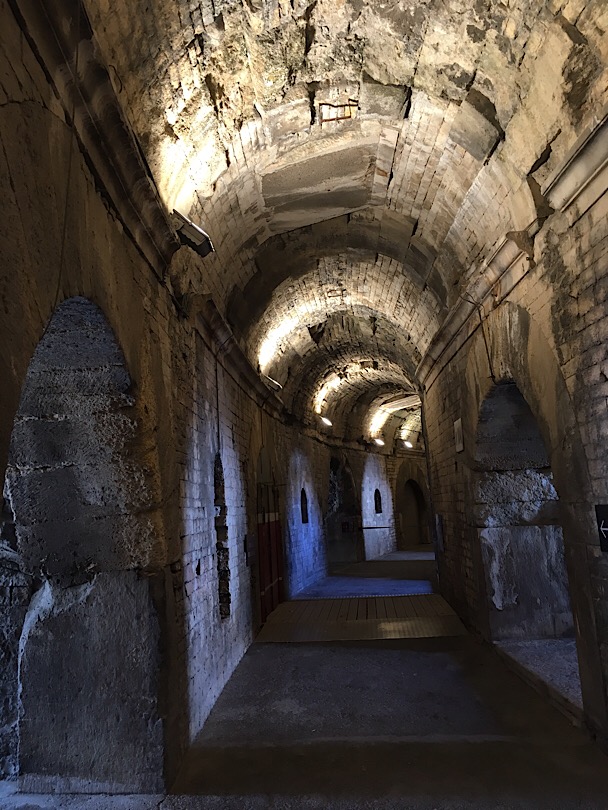
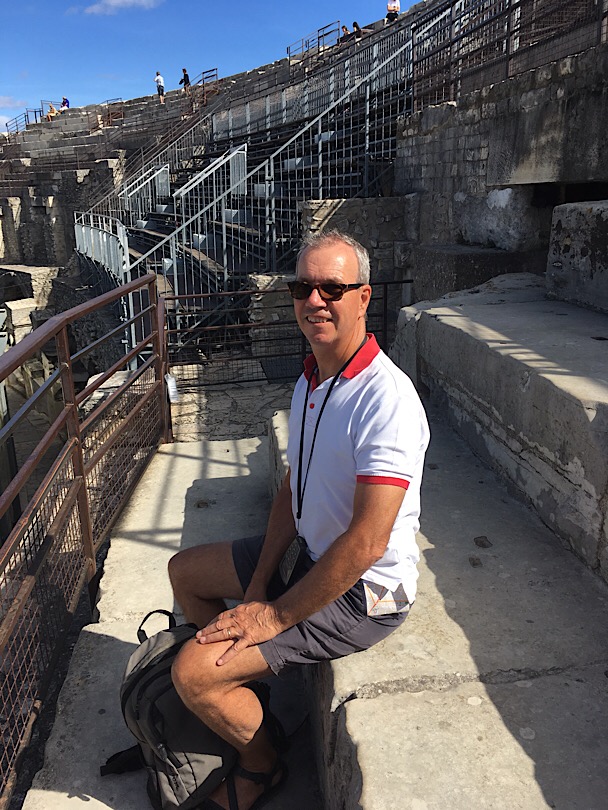
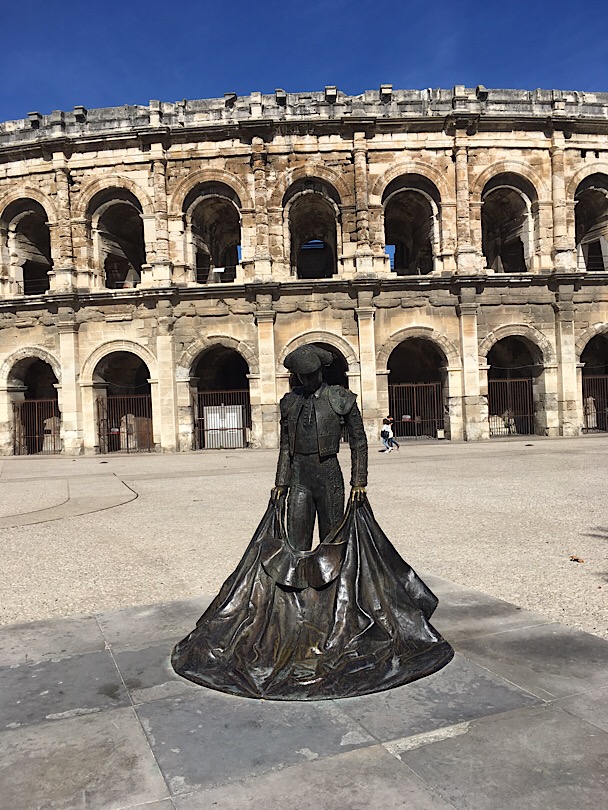
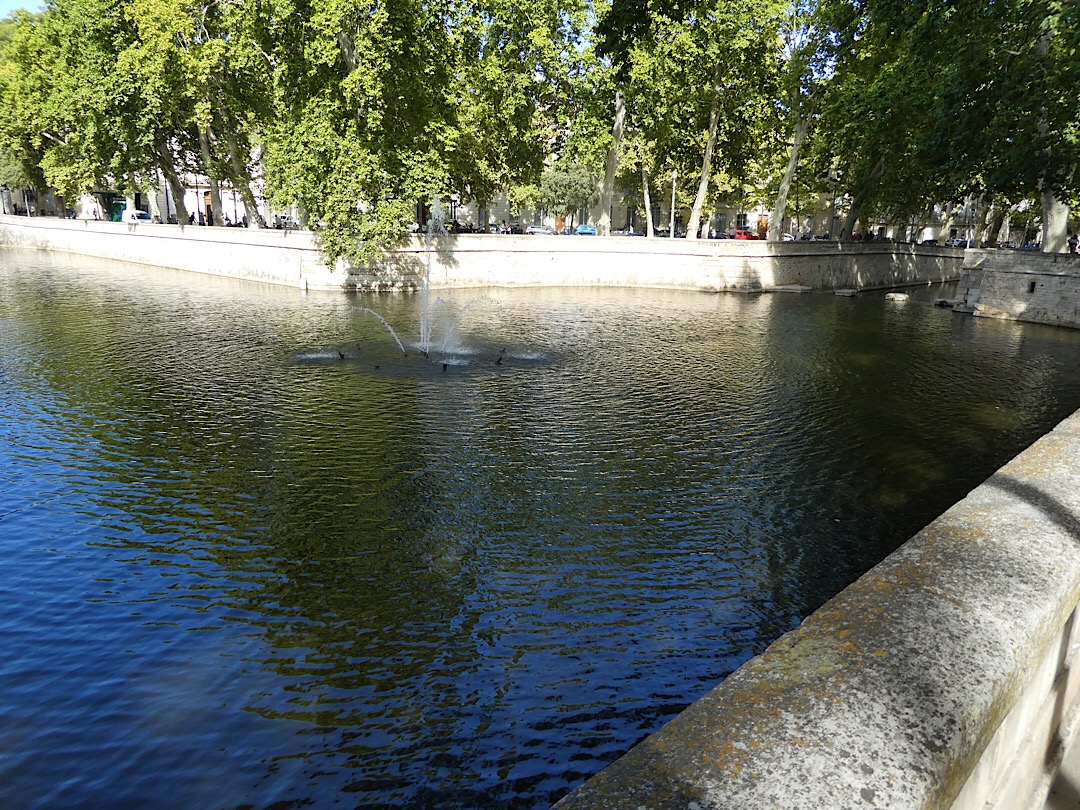
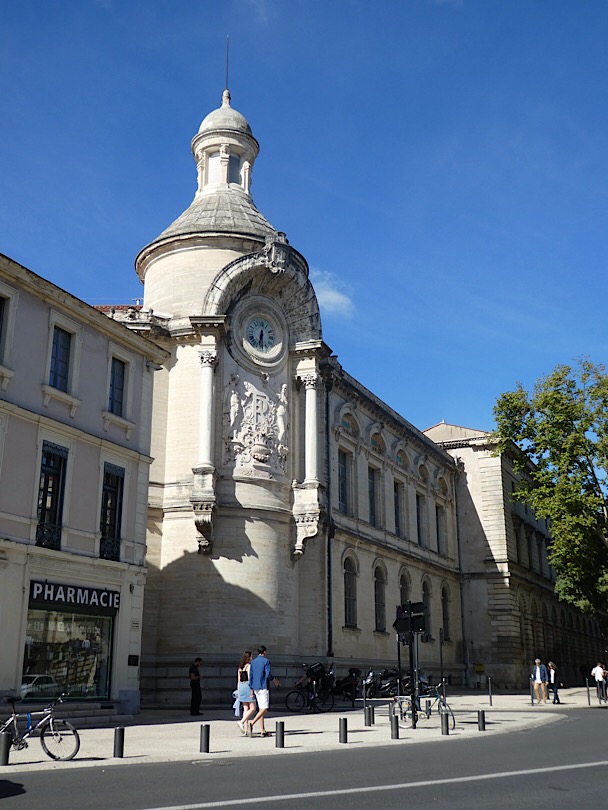
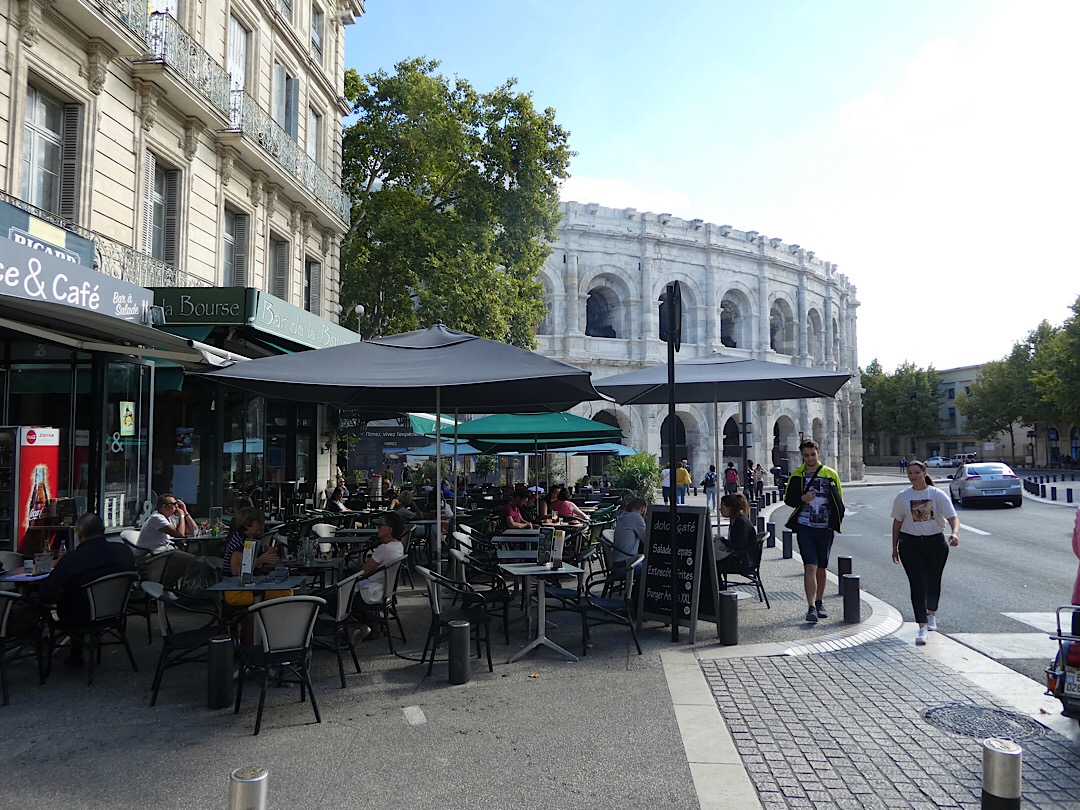
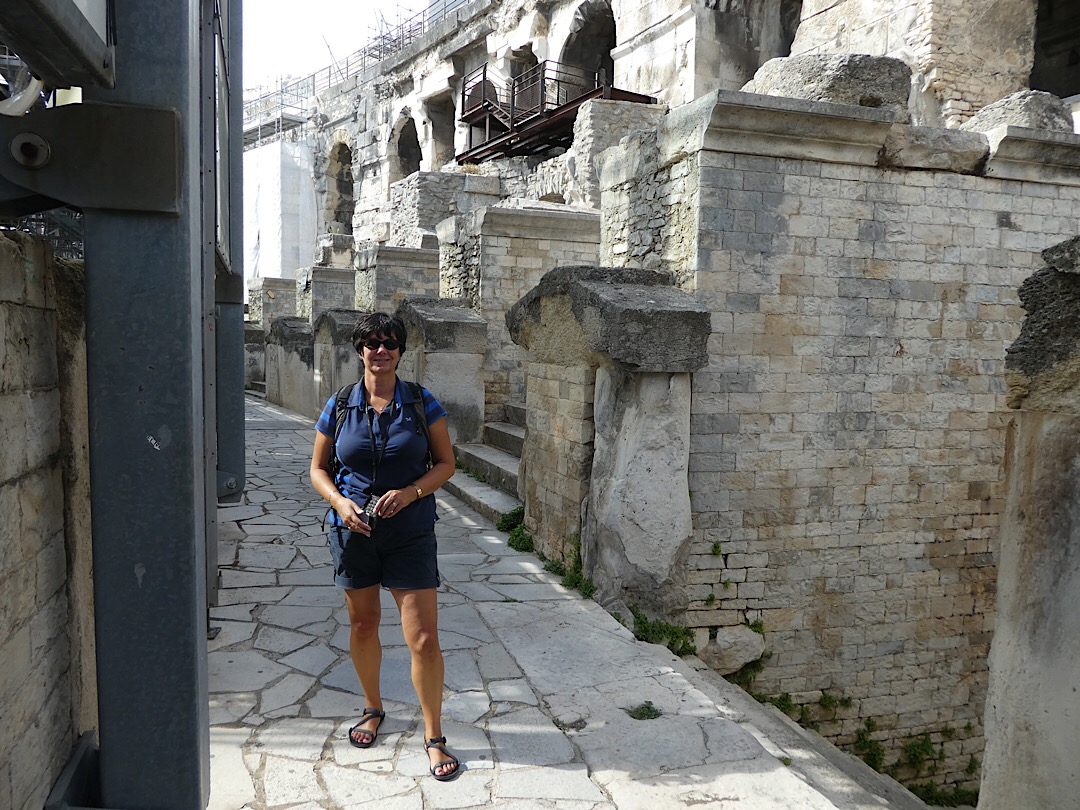
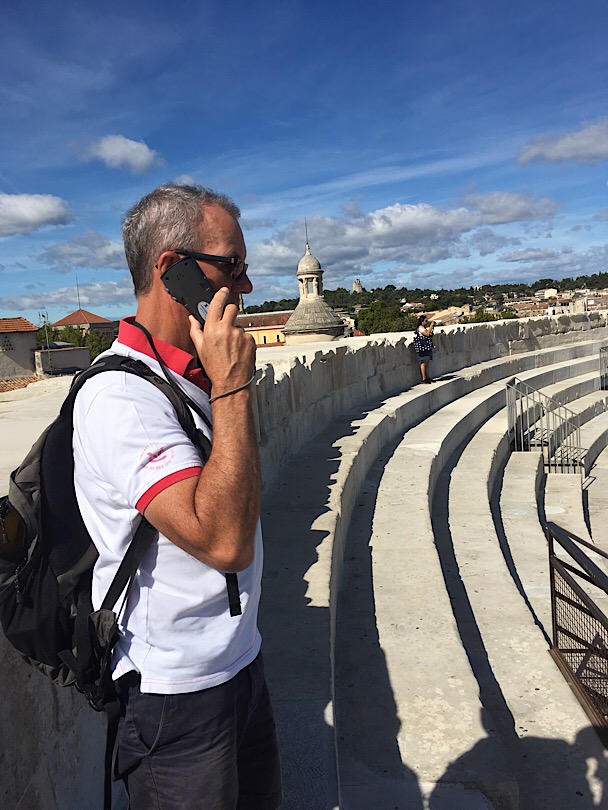
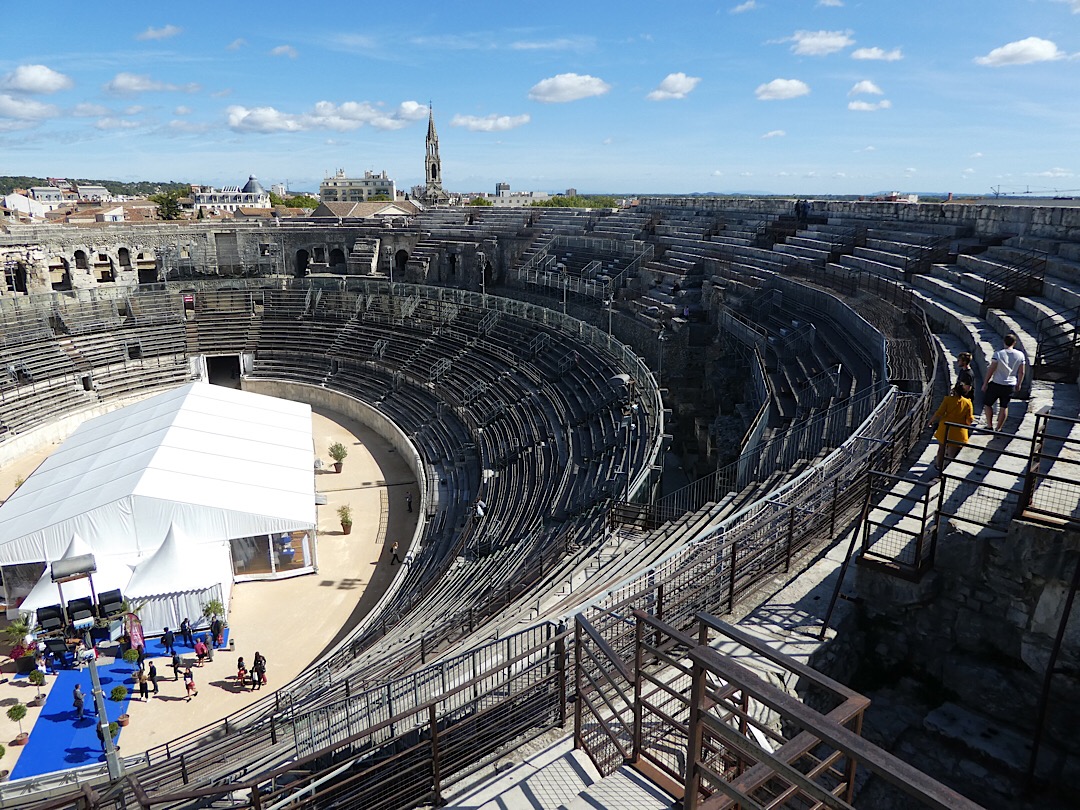
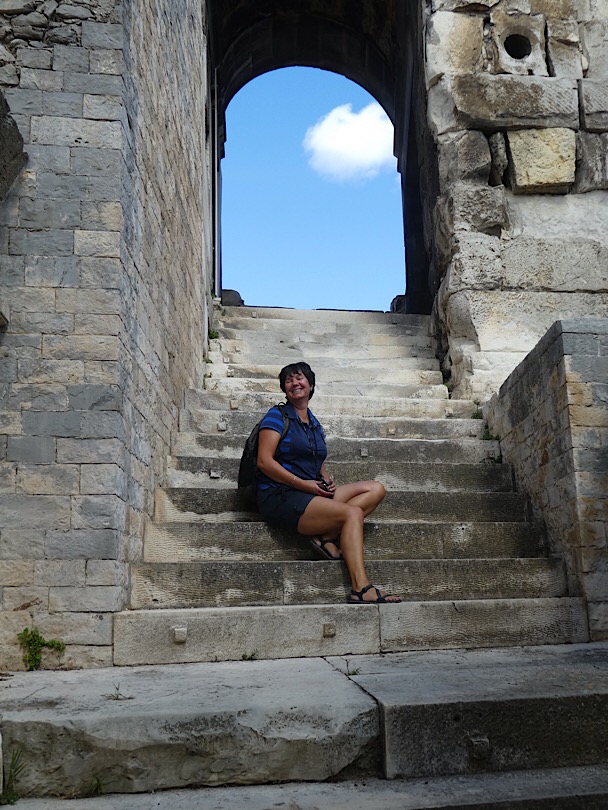
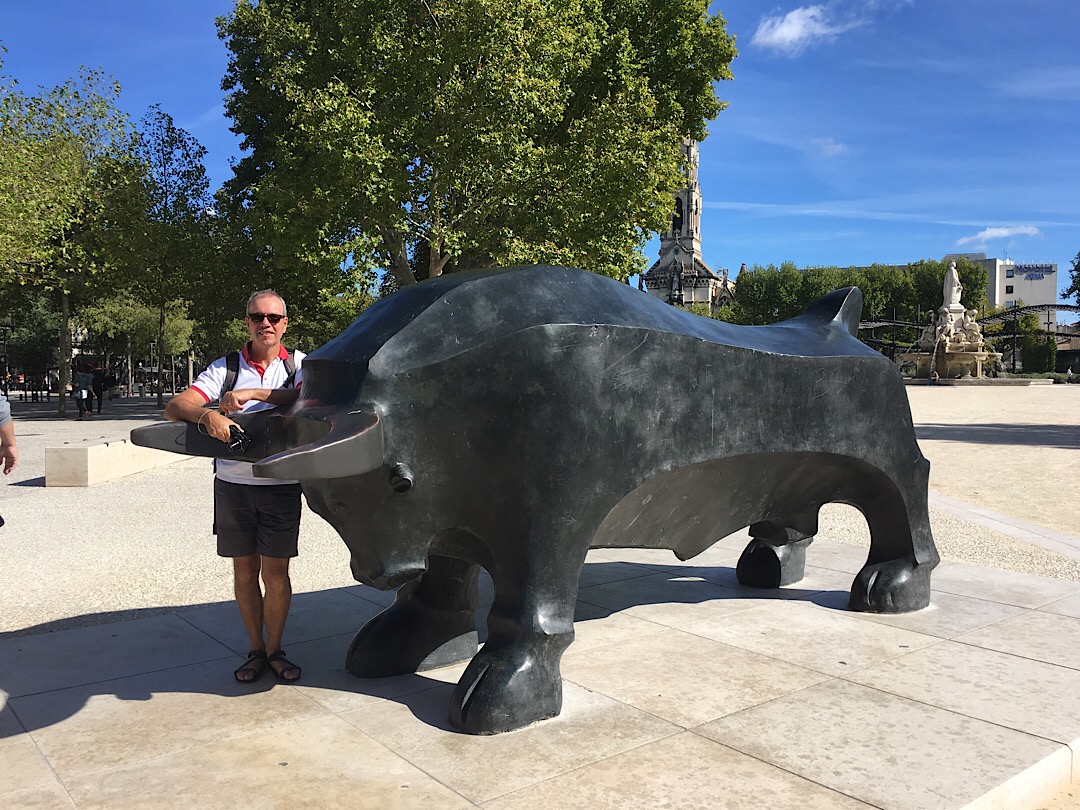
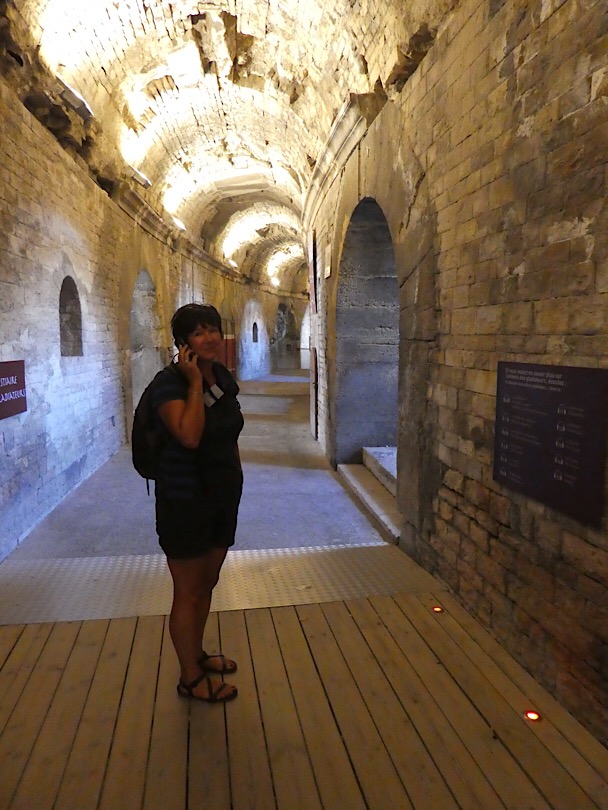
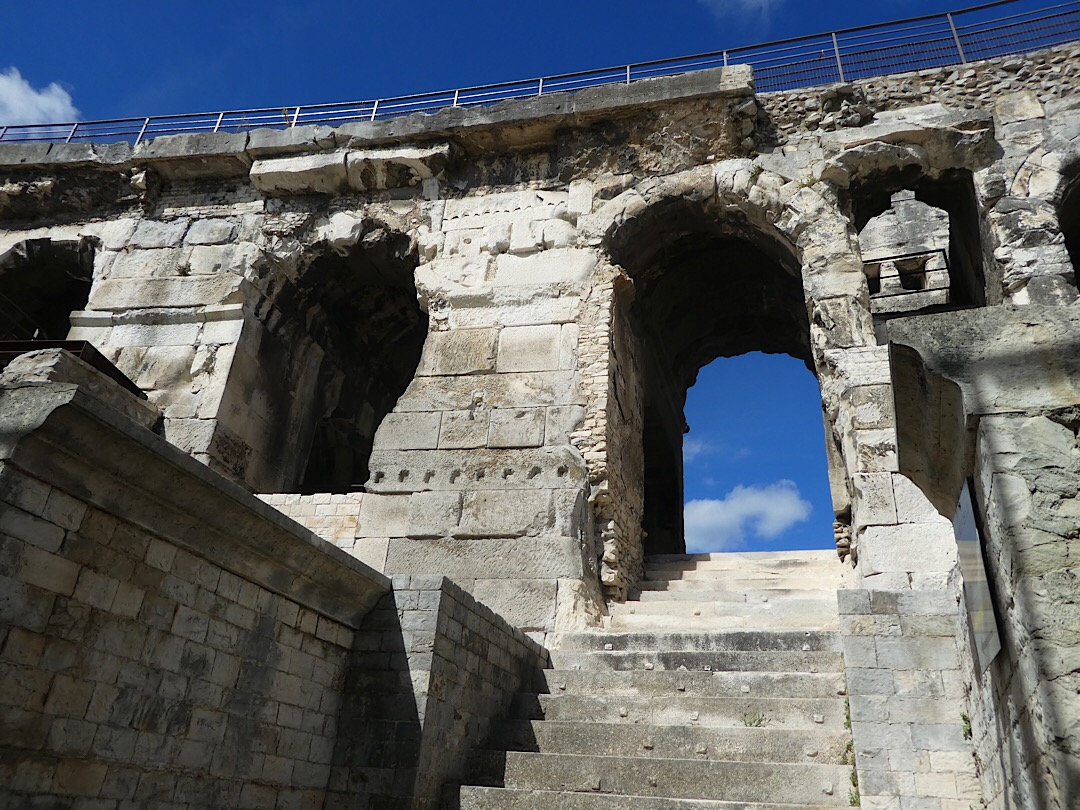
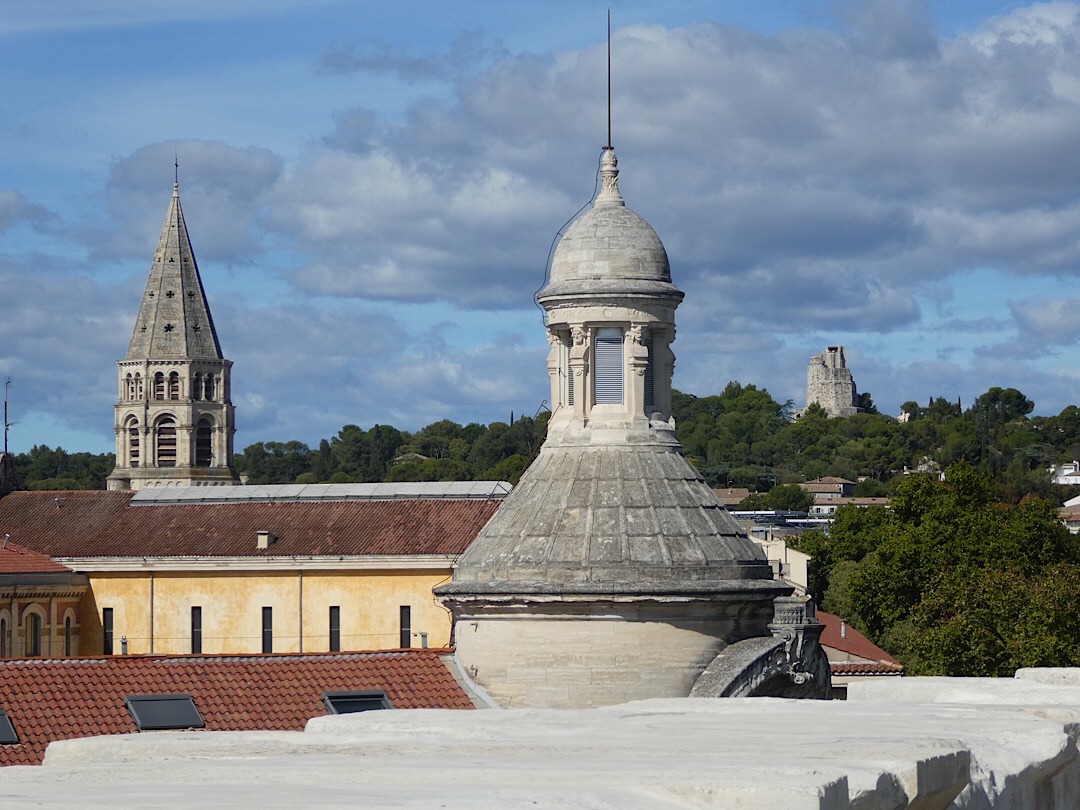
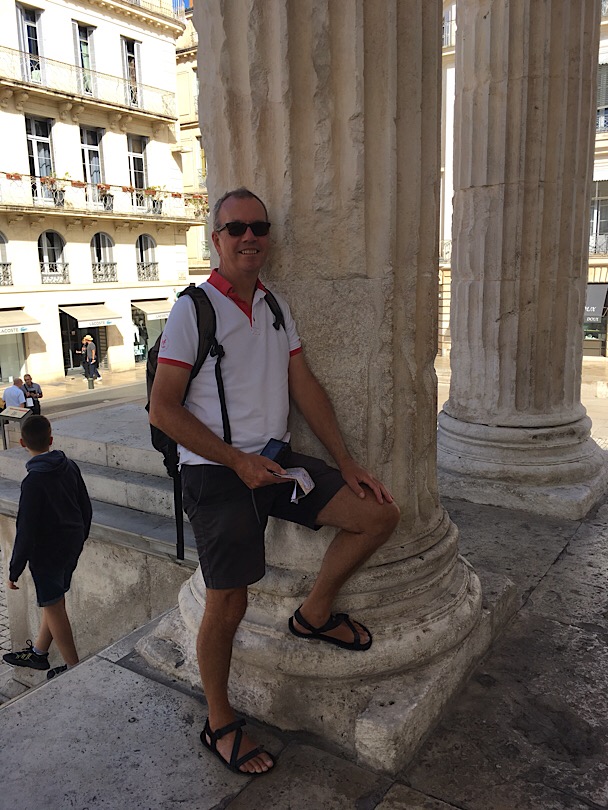
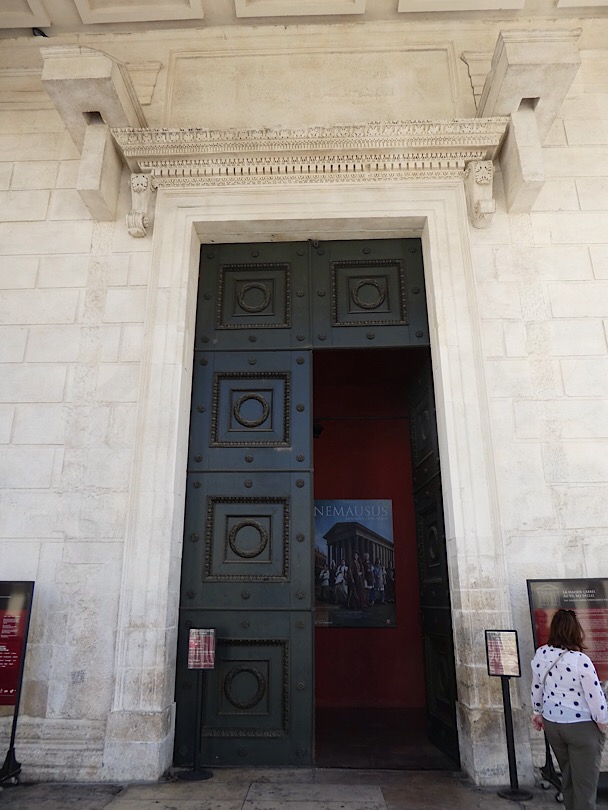
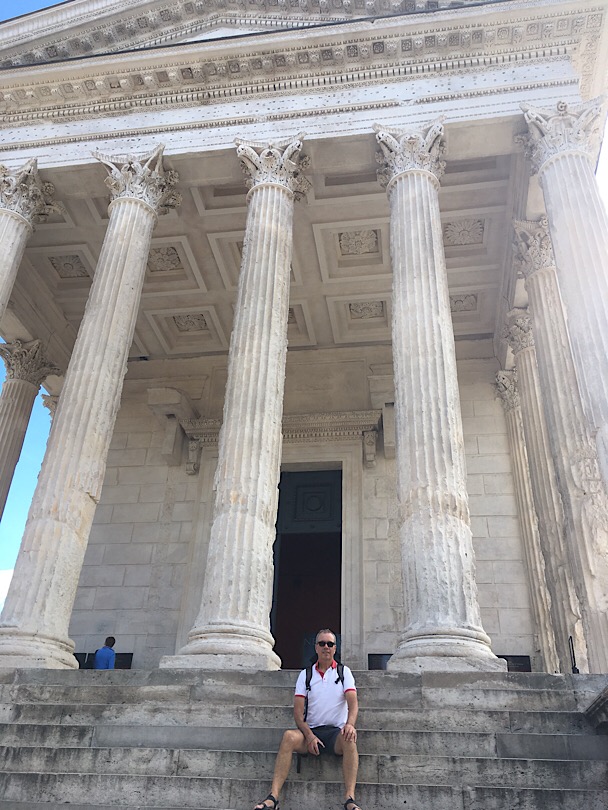
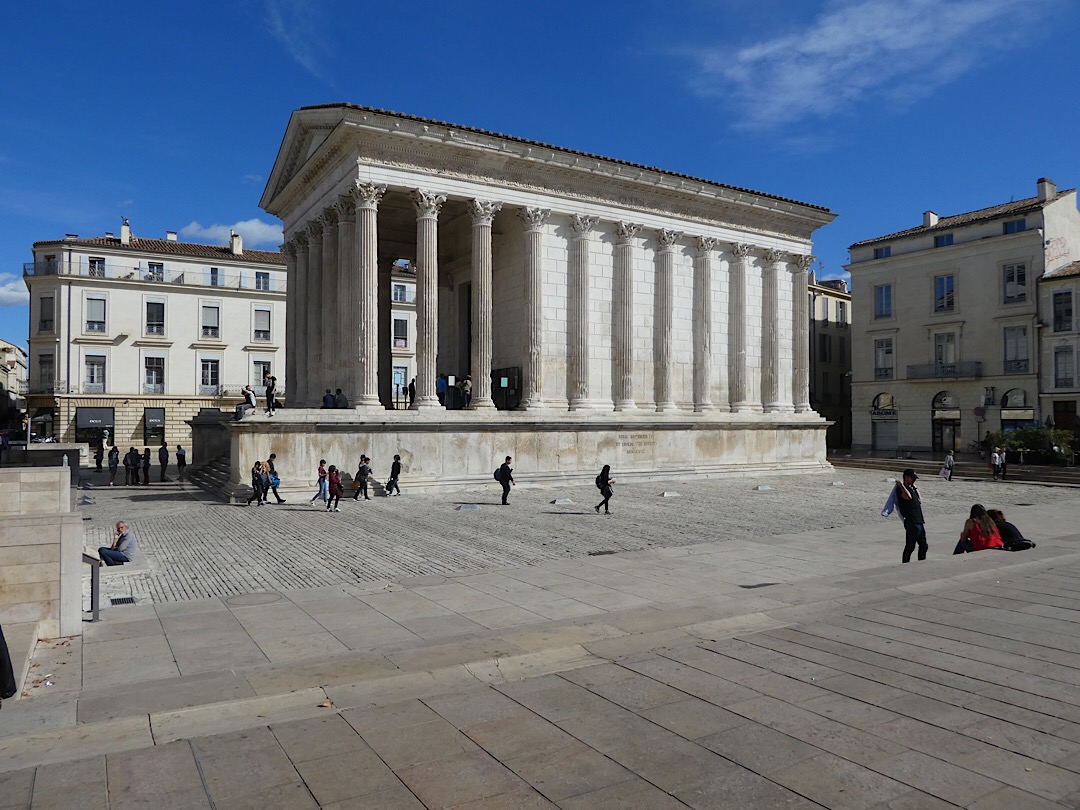
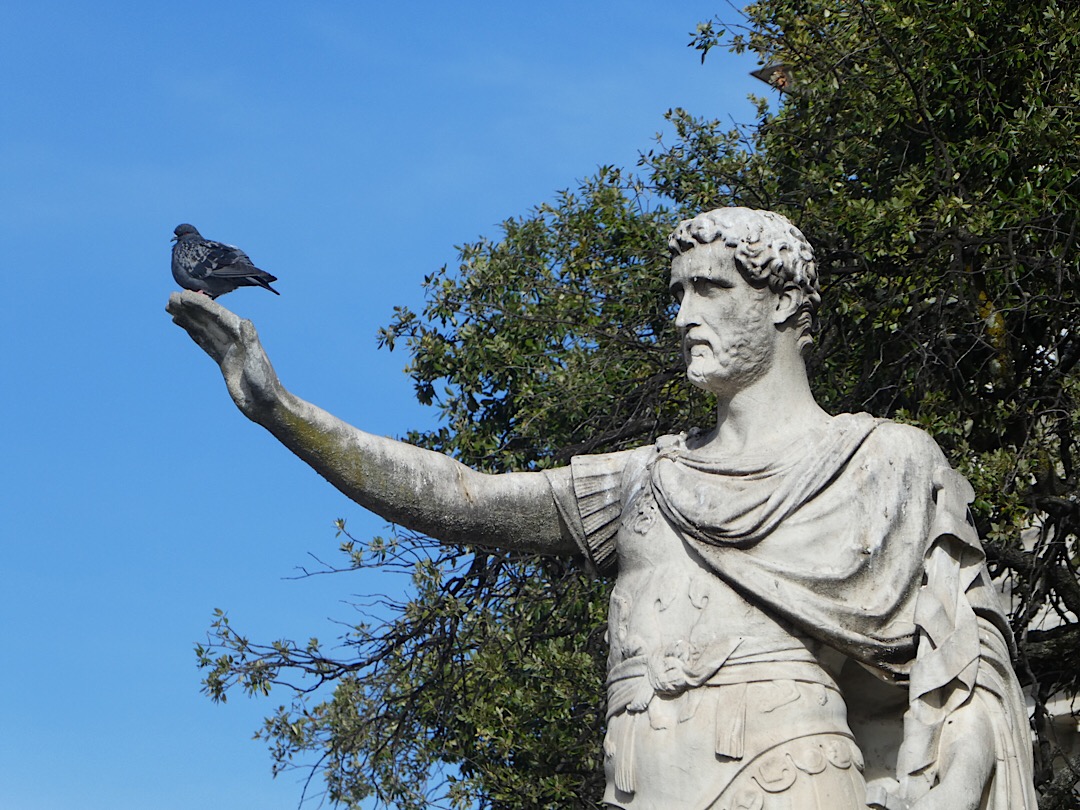
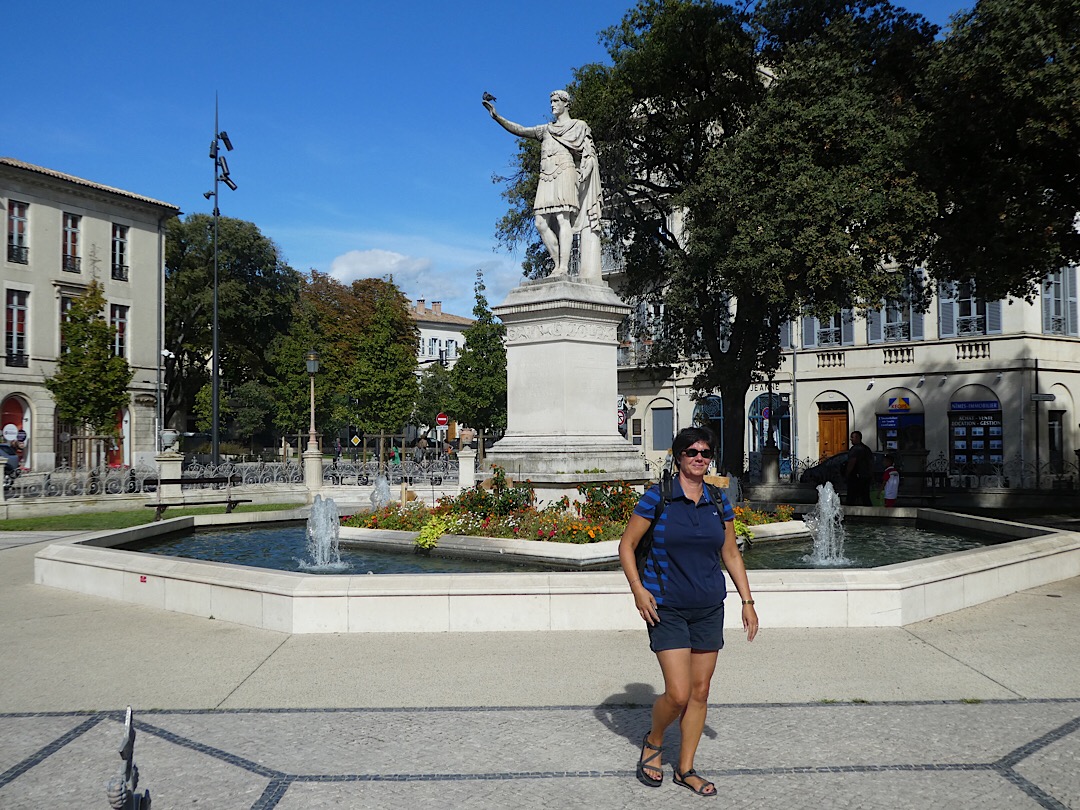
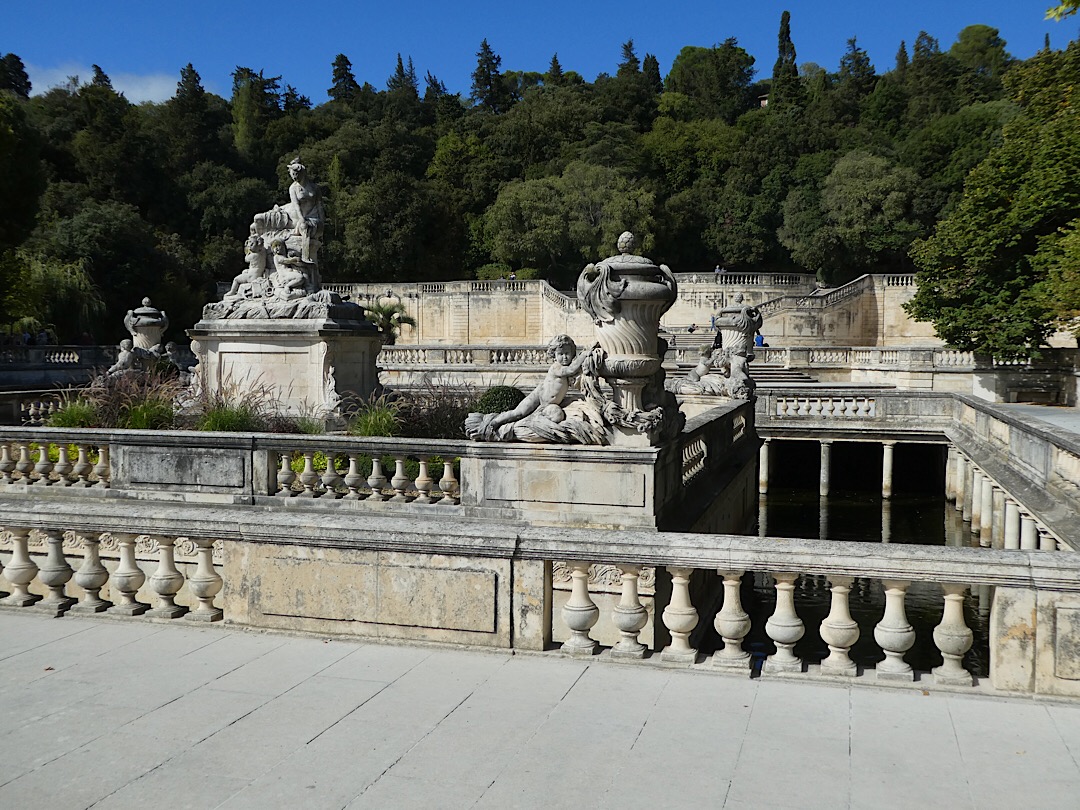
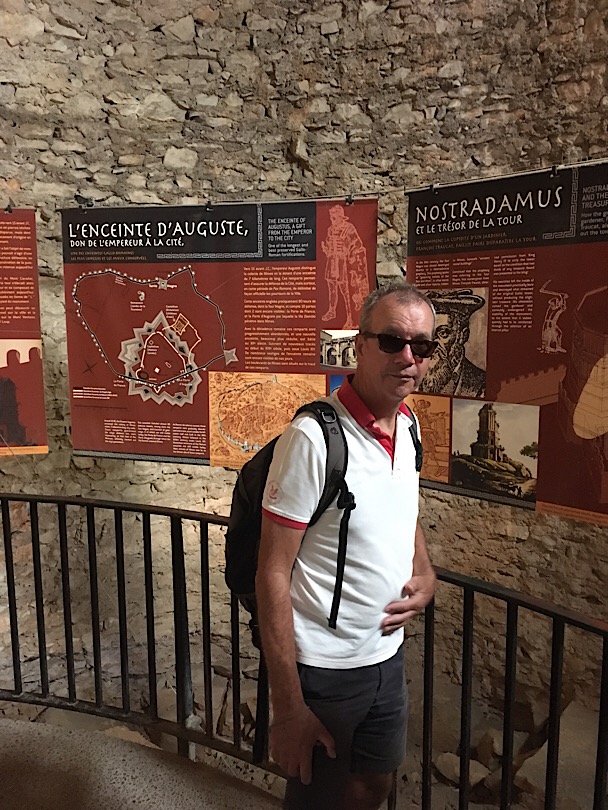
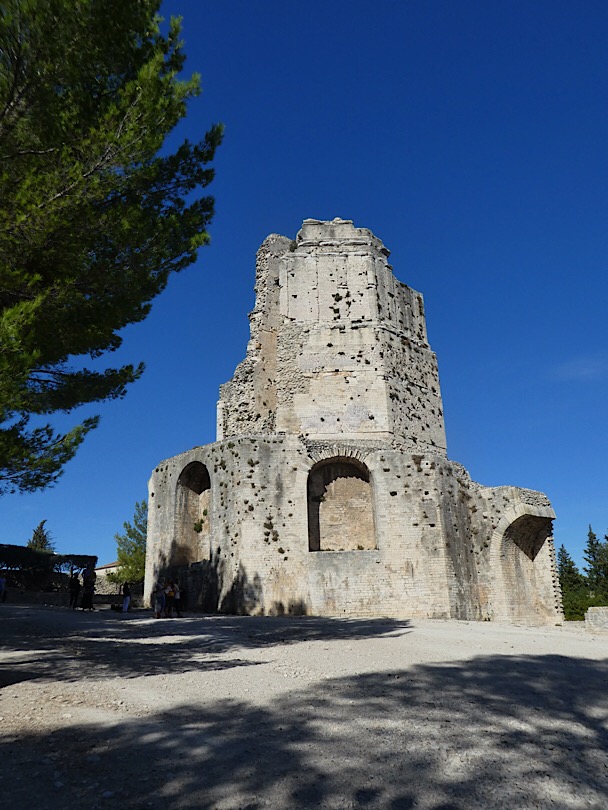
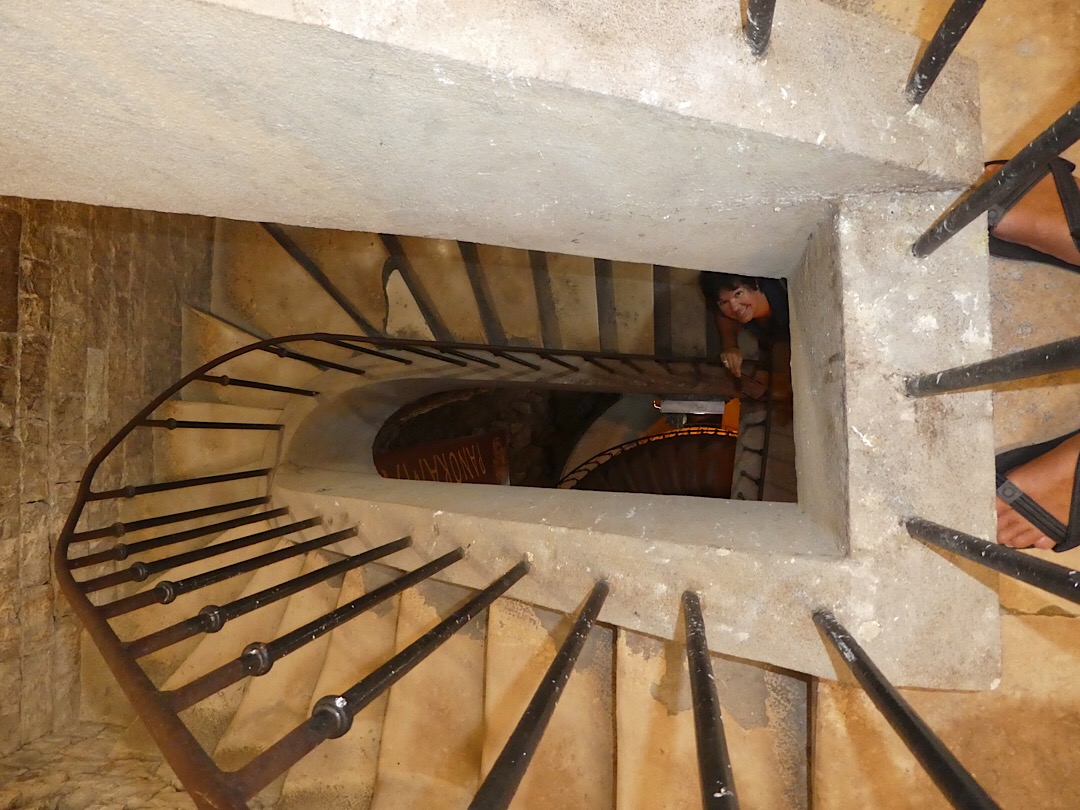
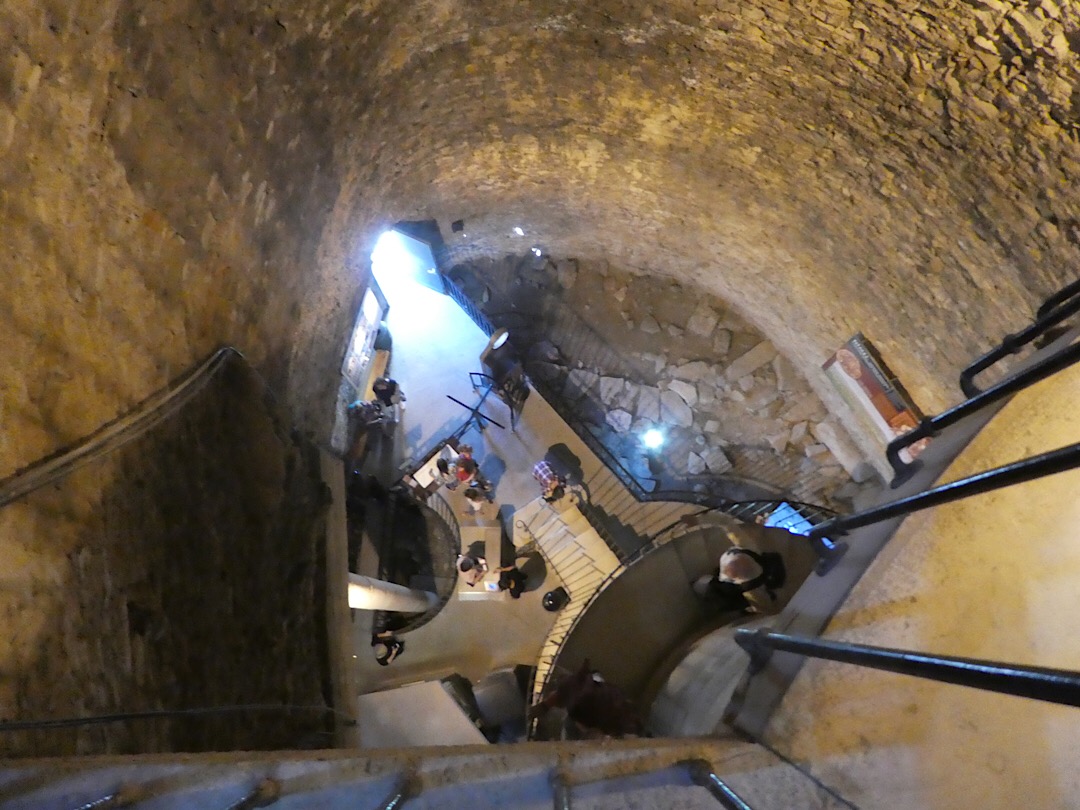
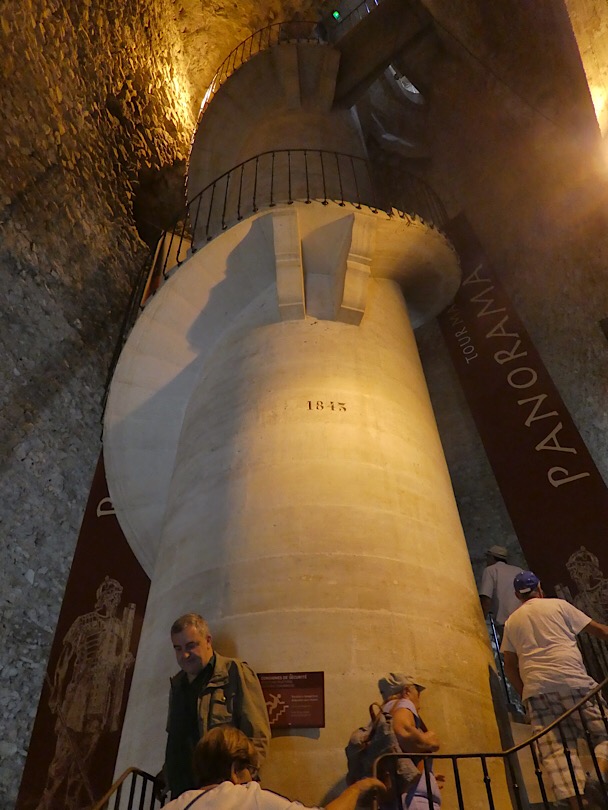
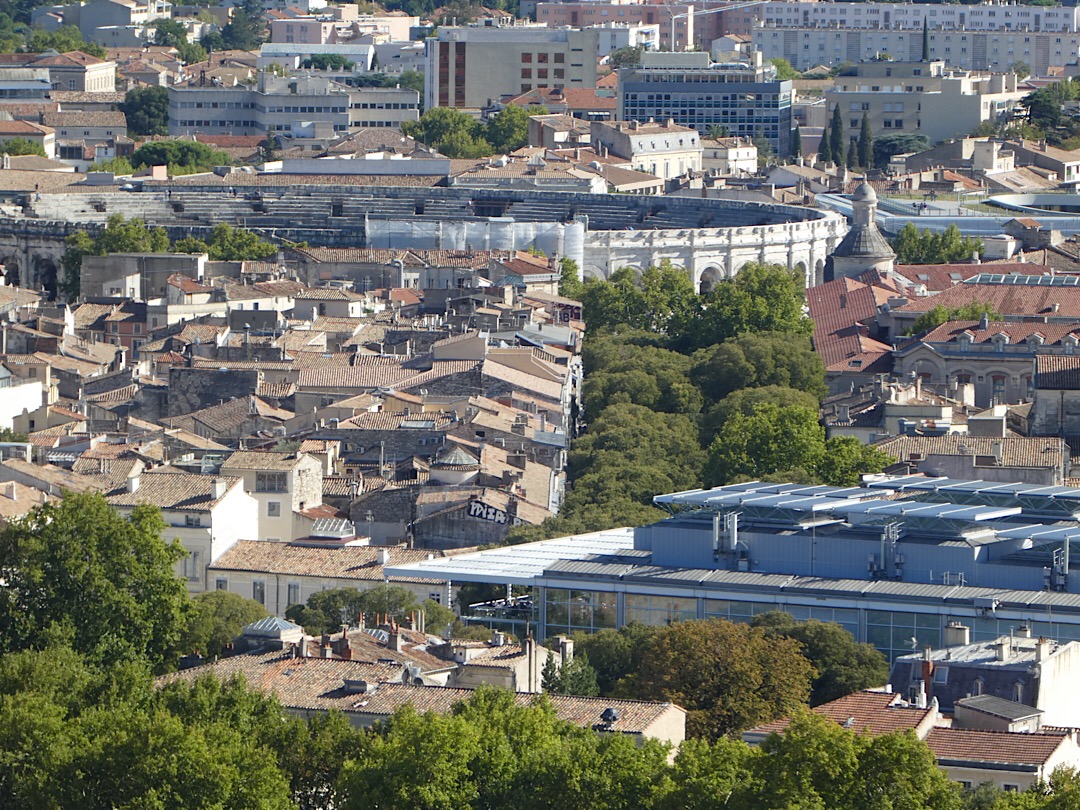
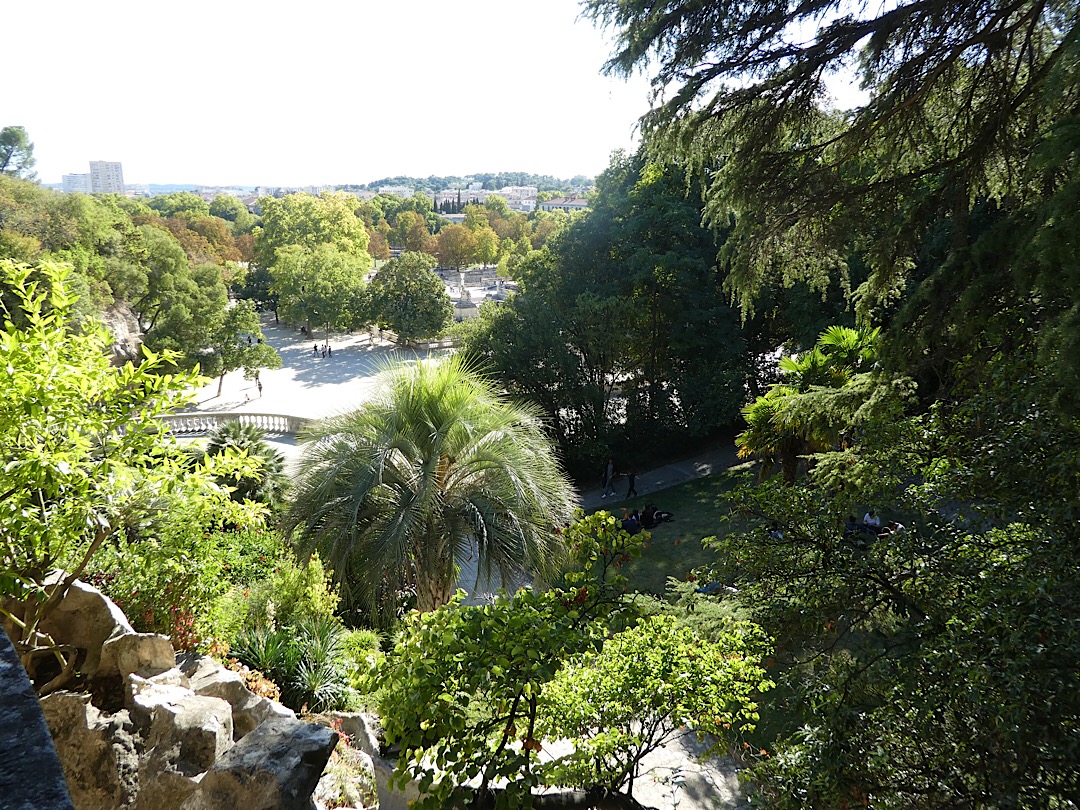
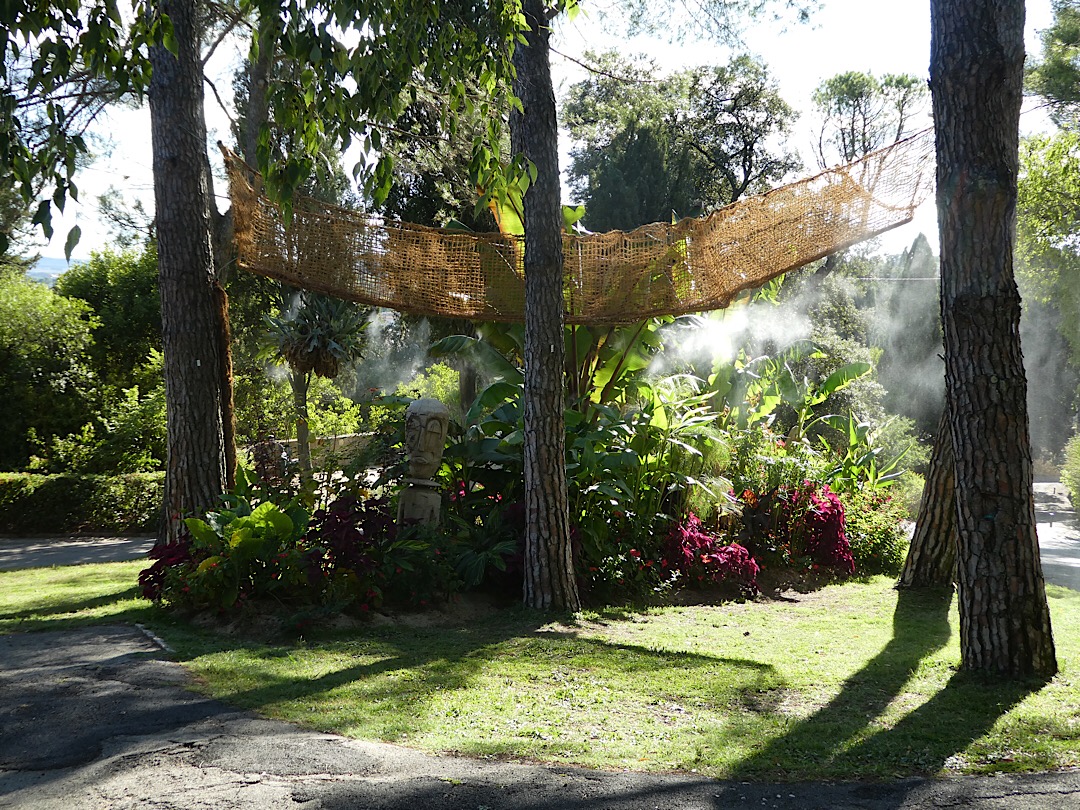

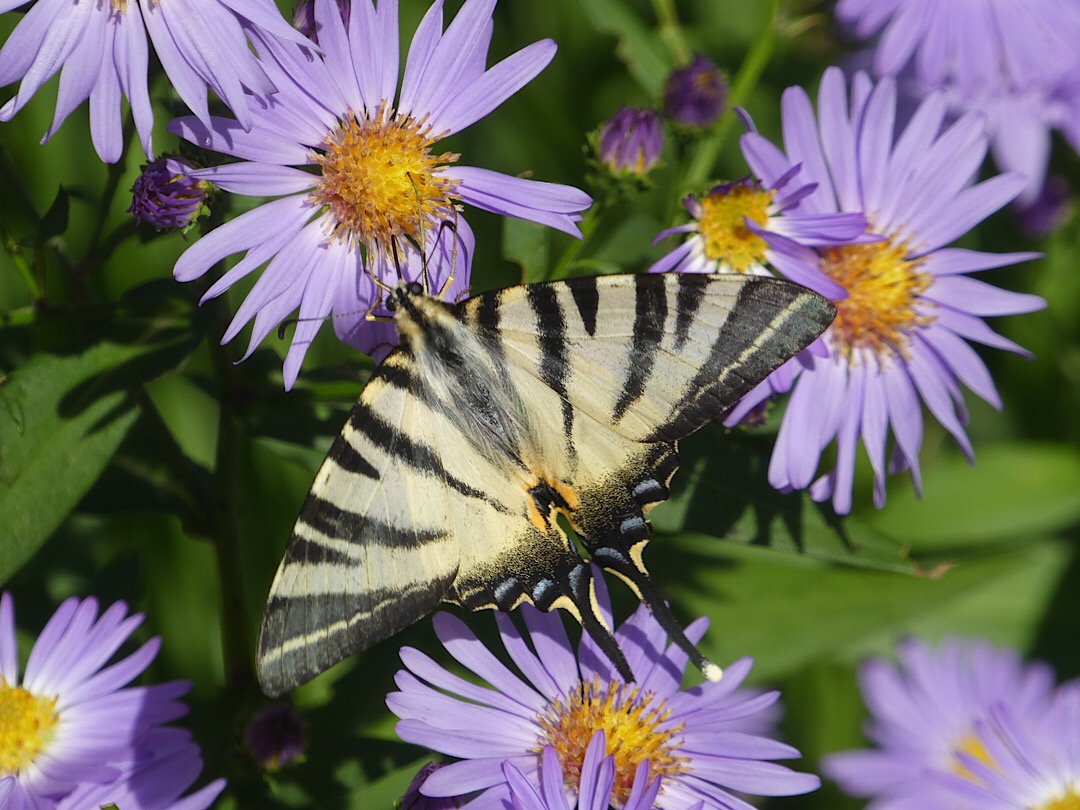
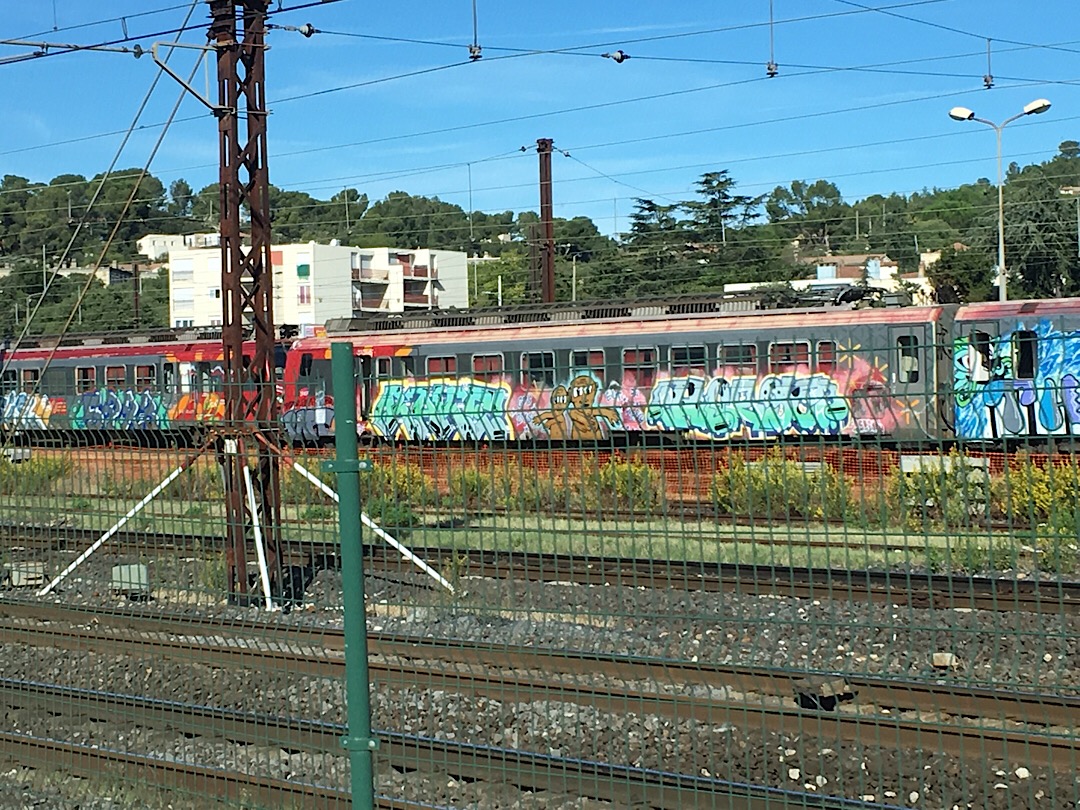



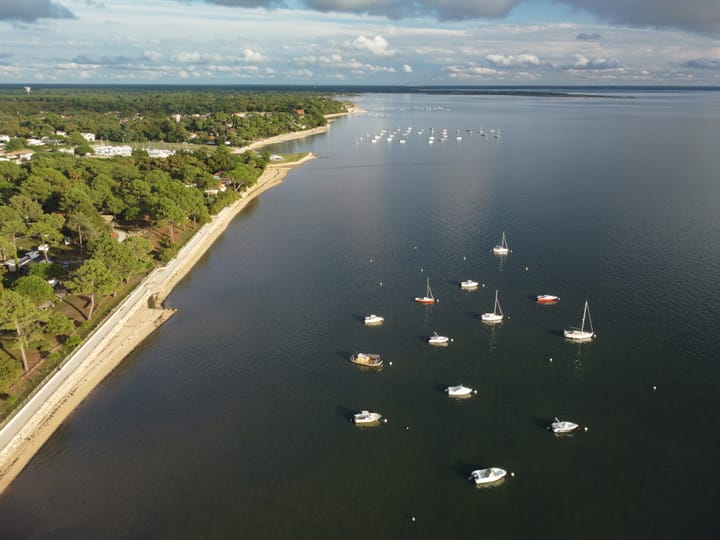
Comments ()